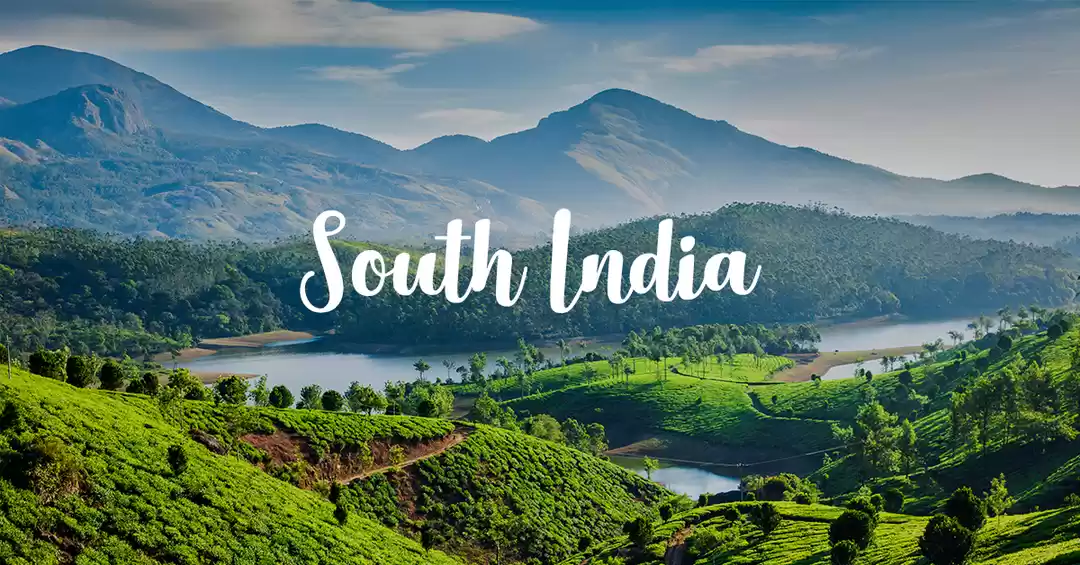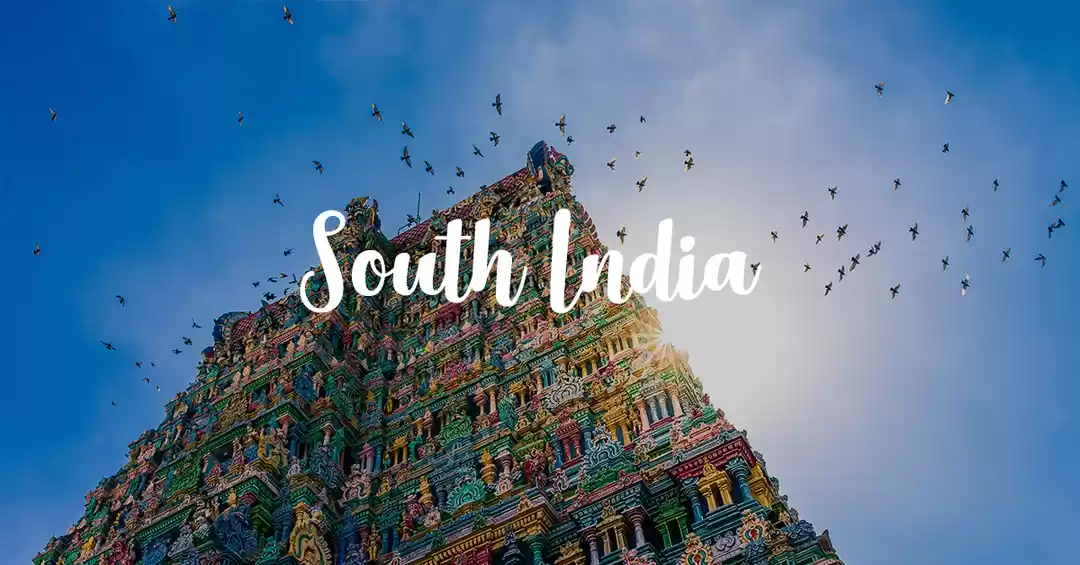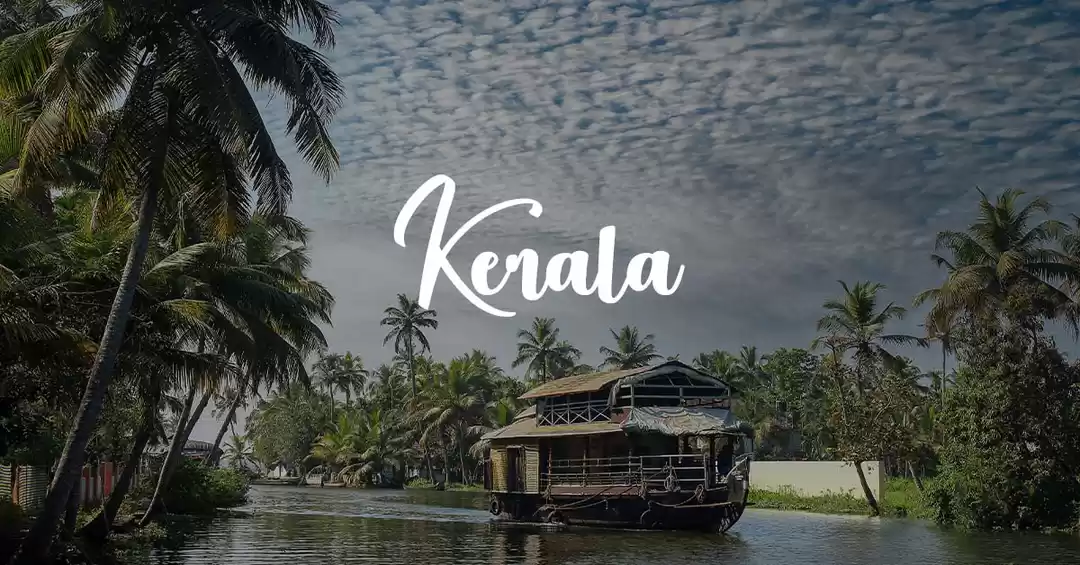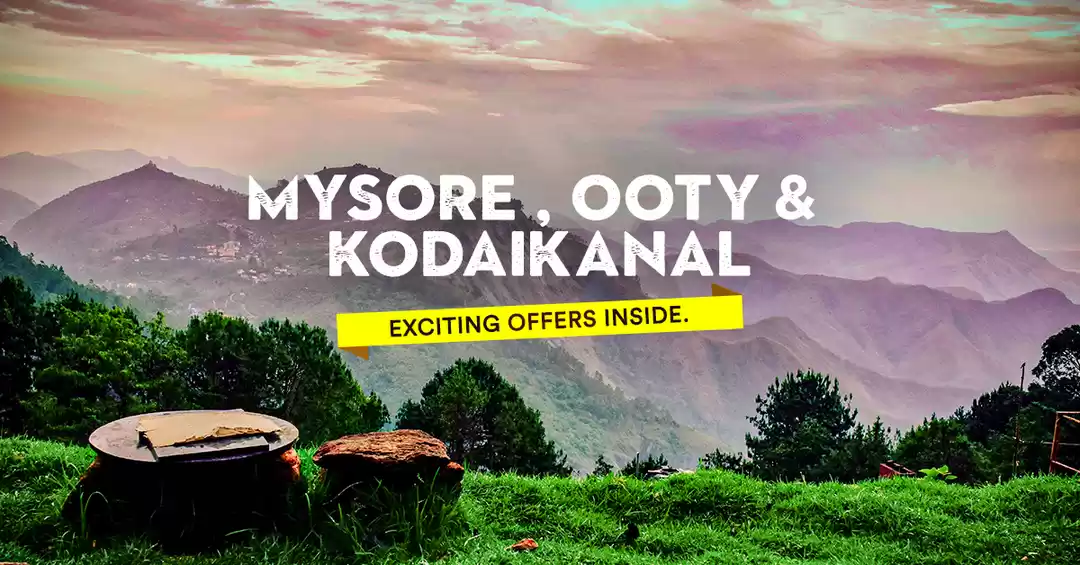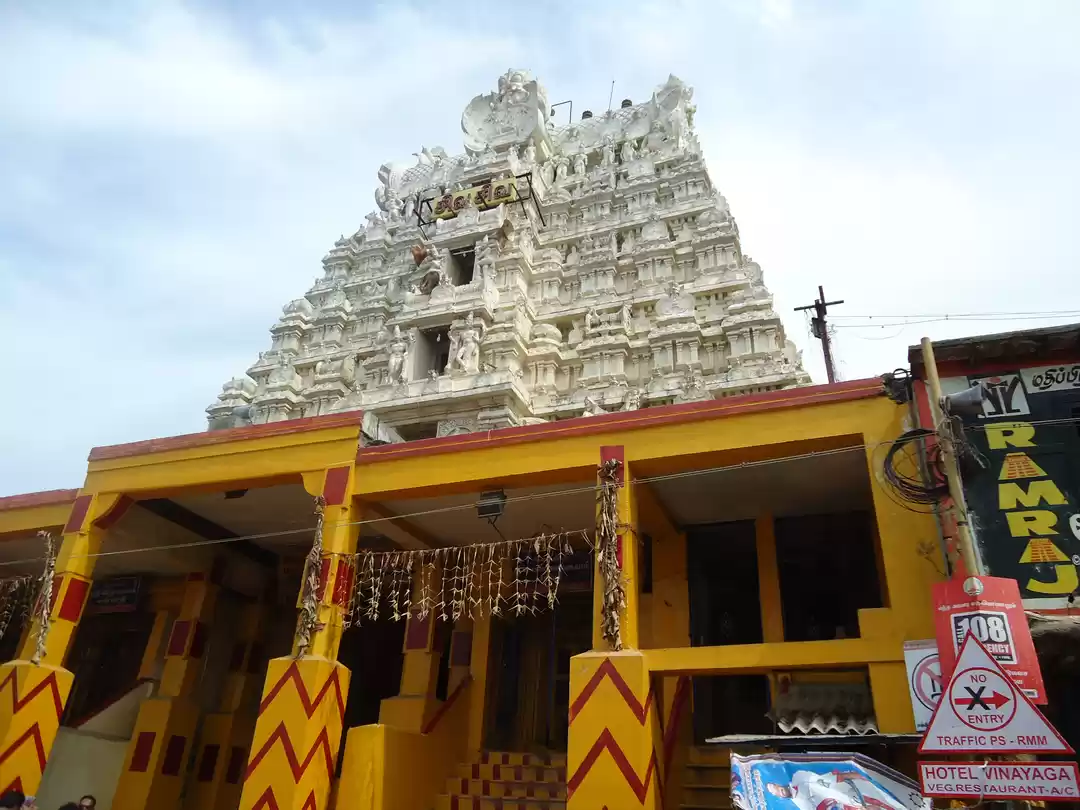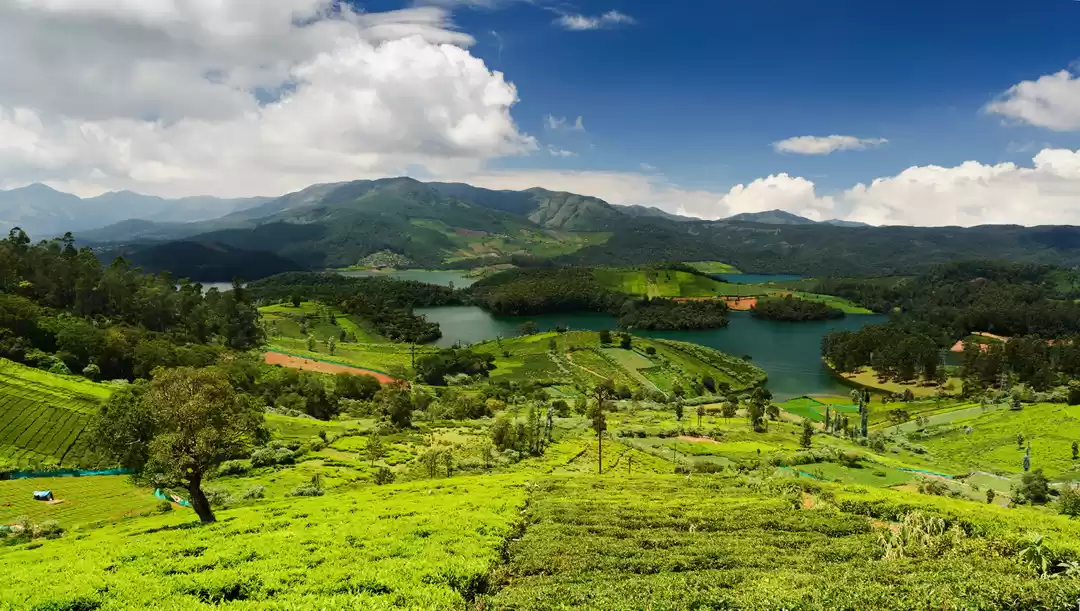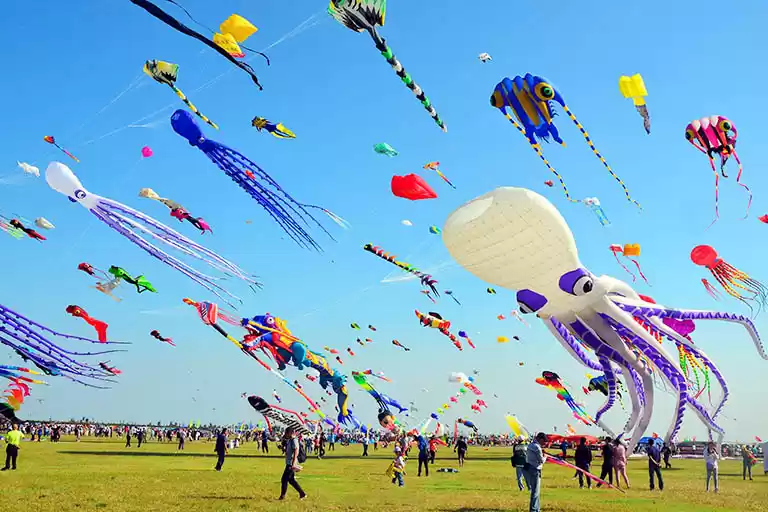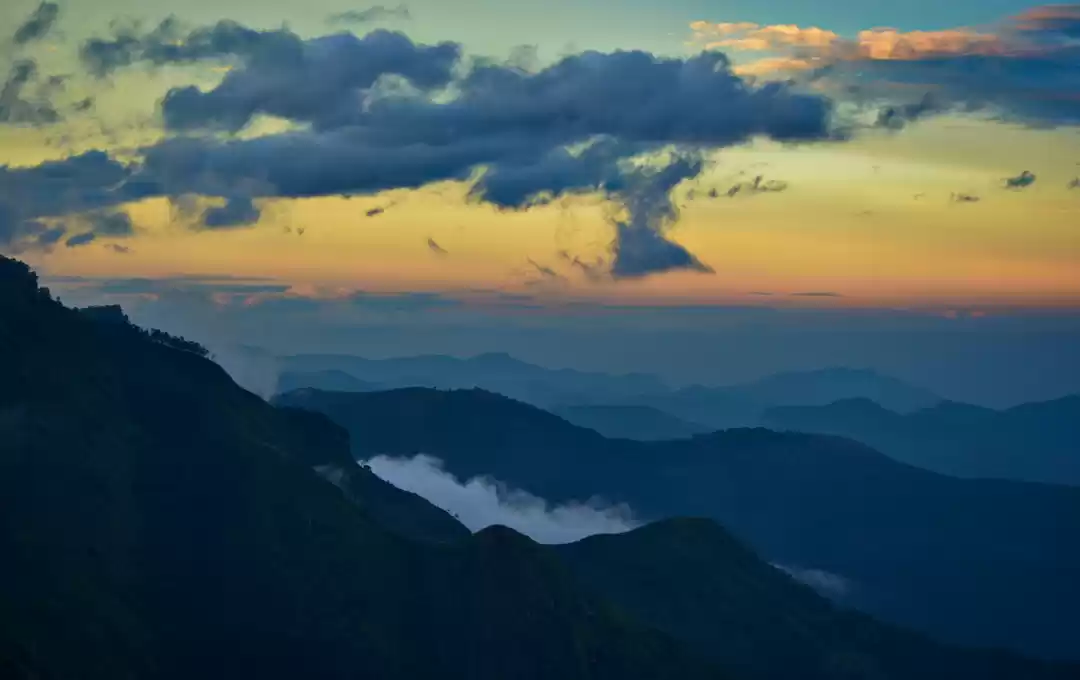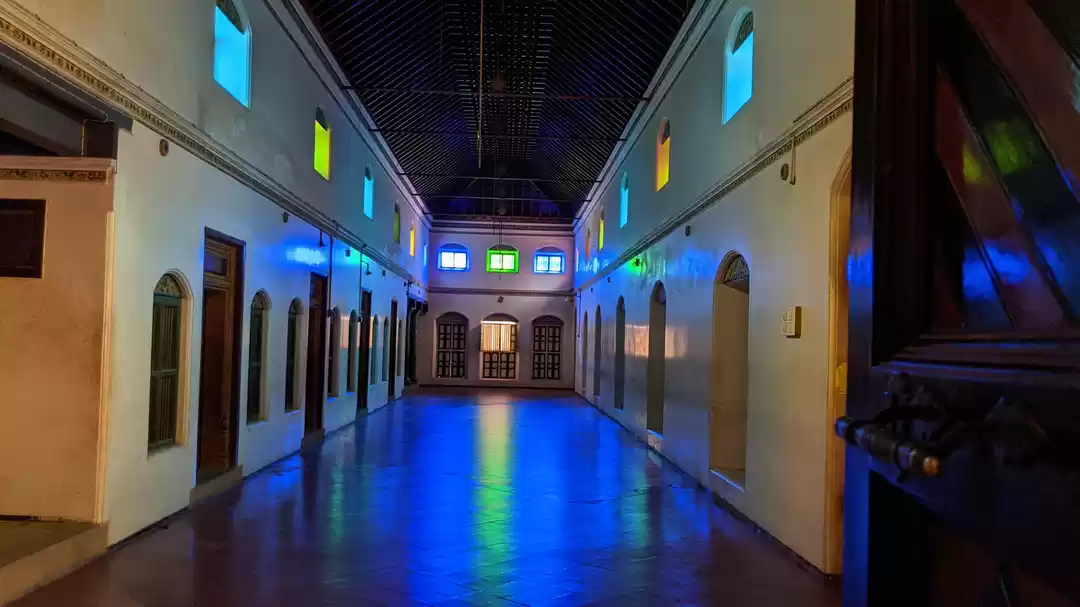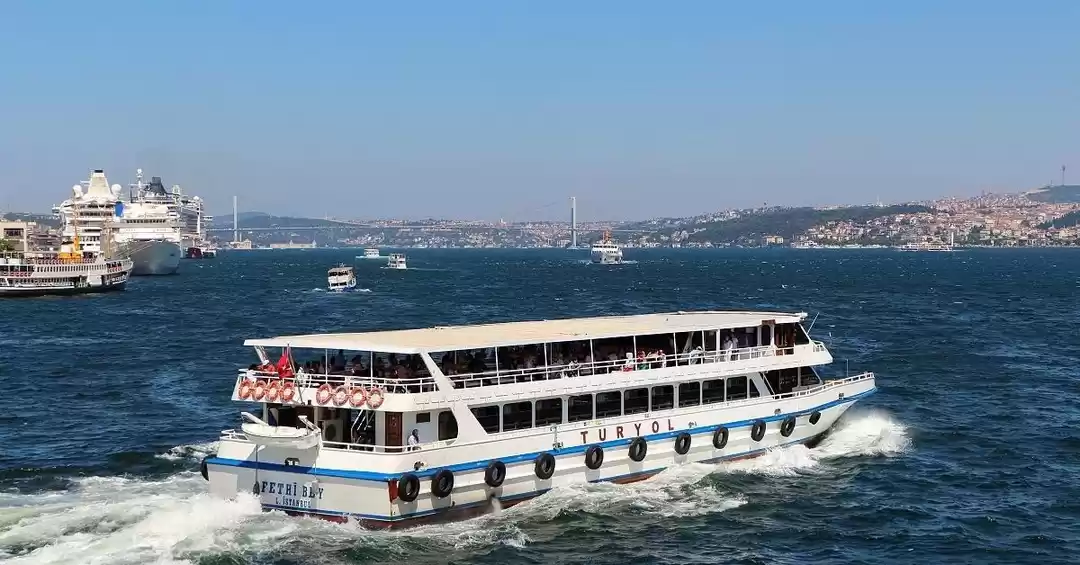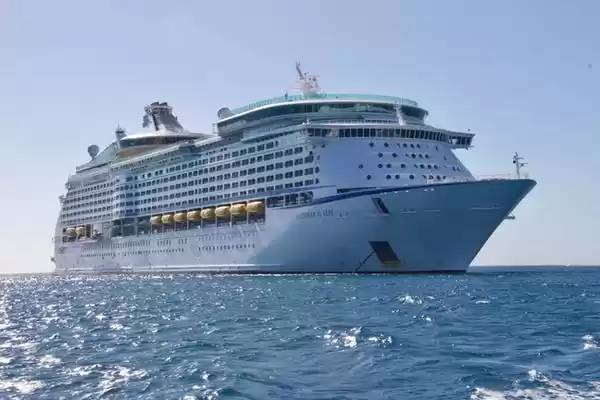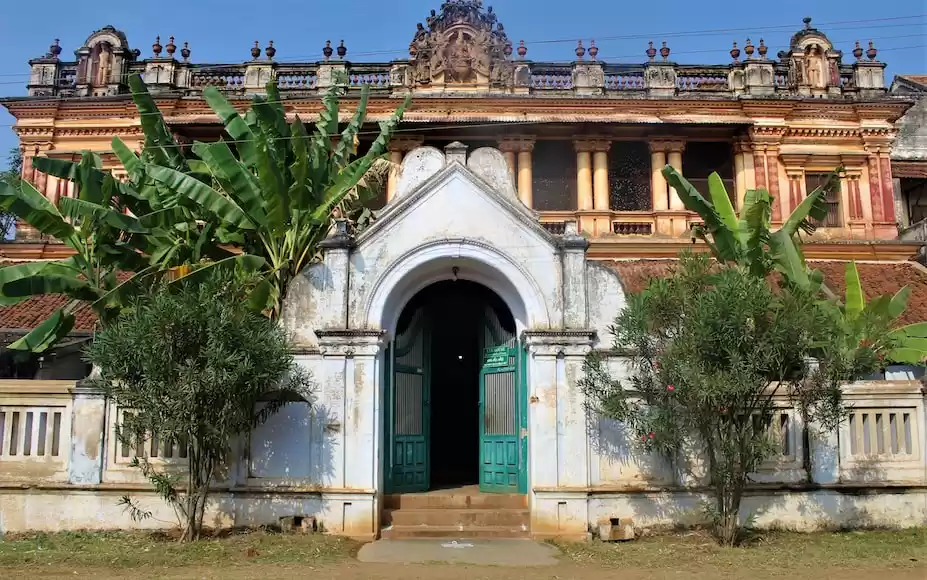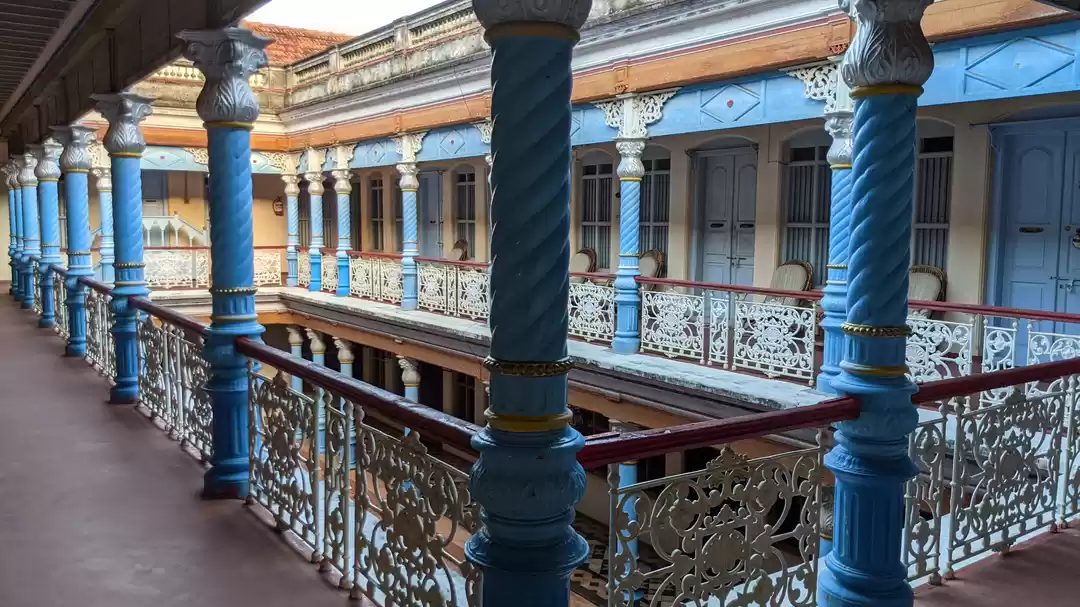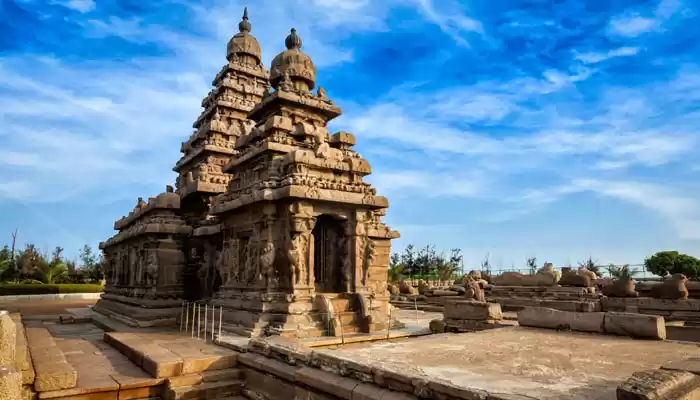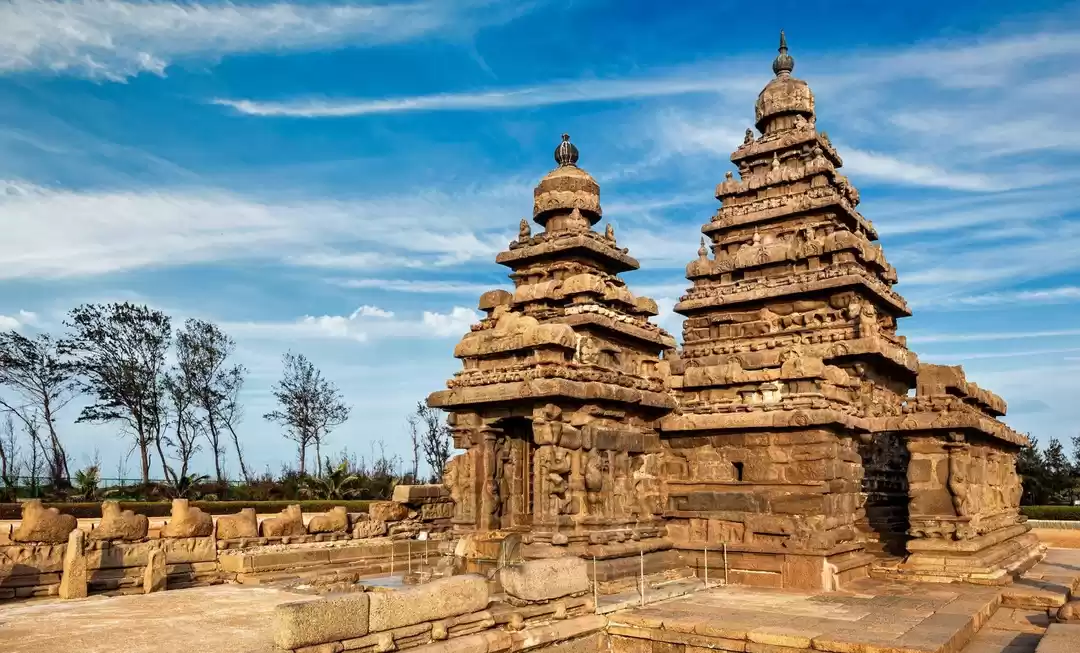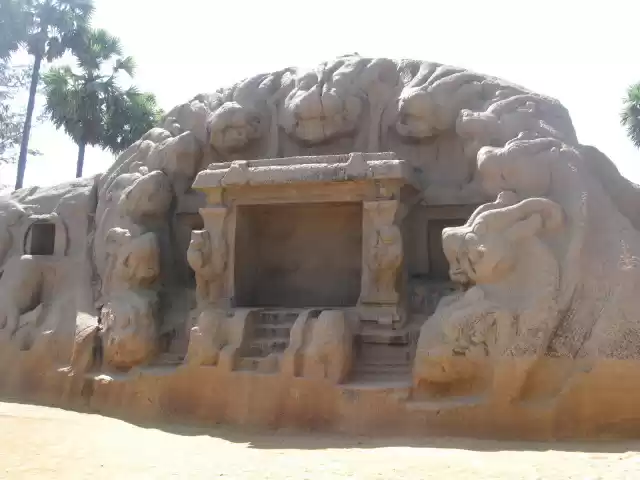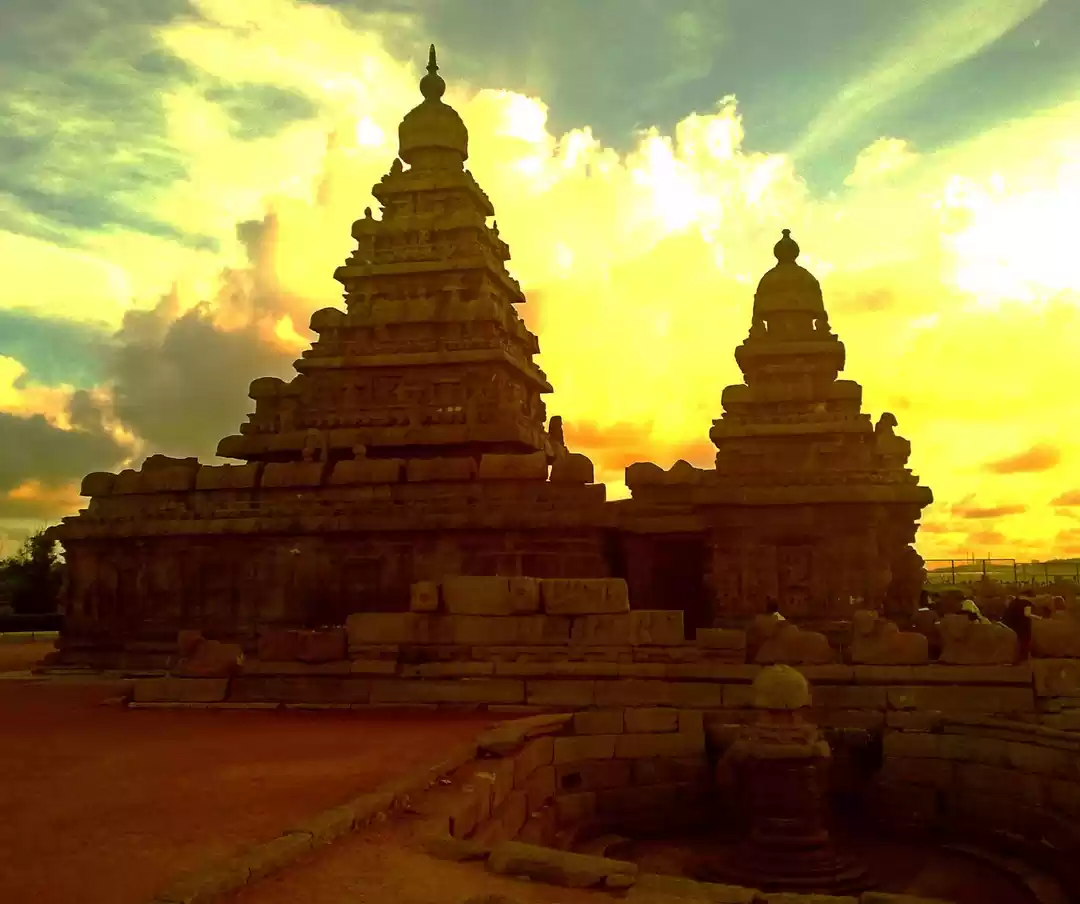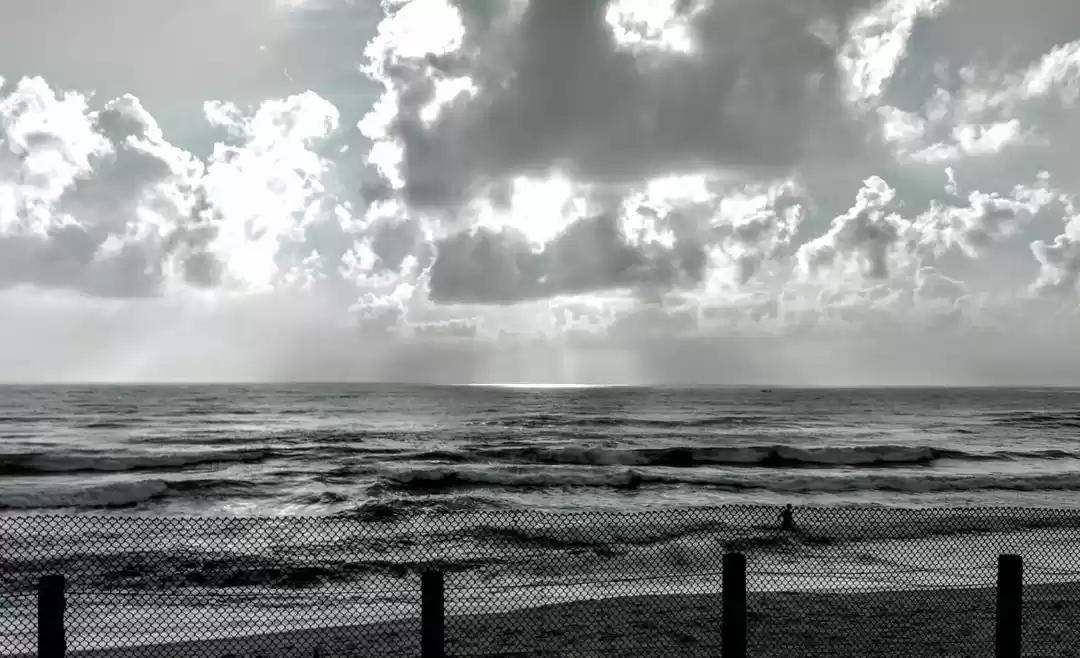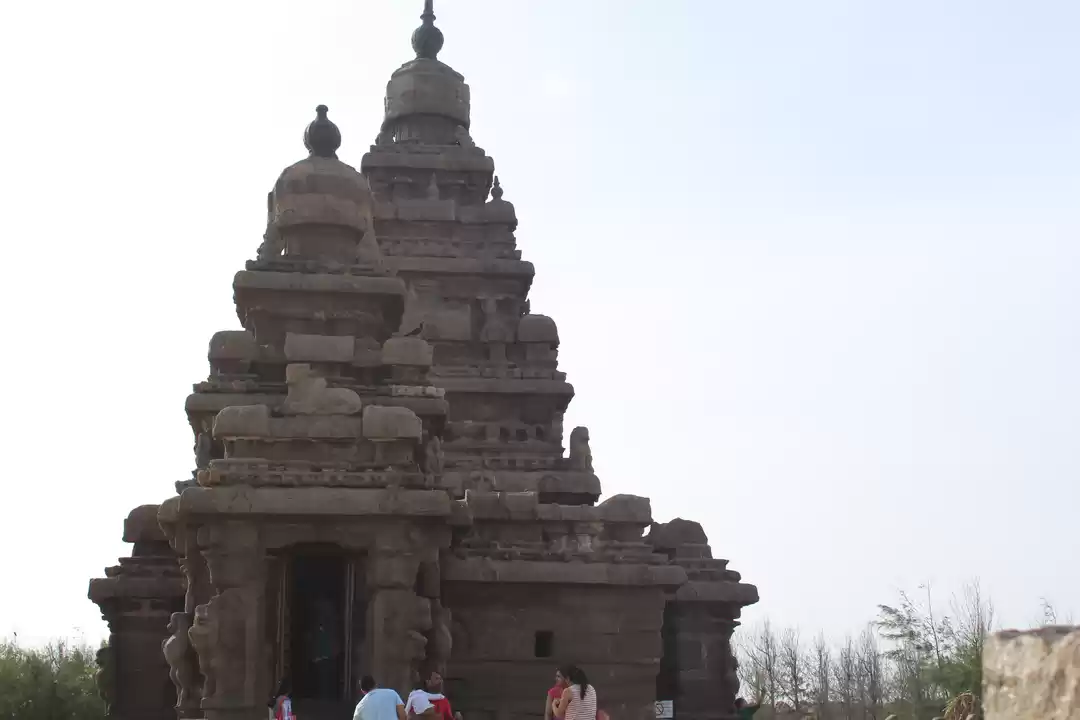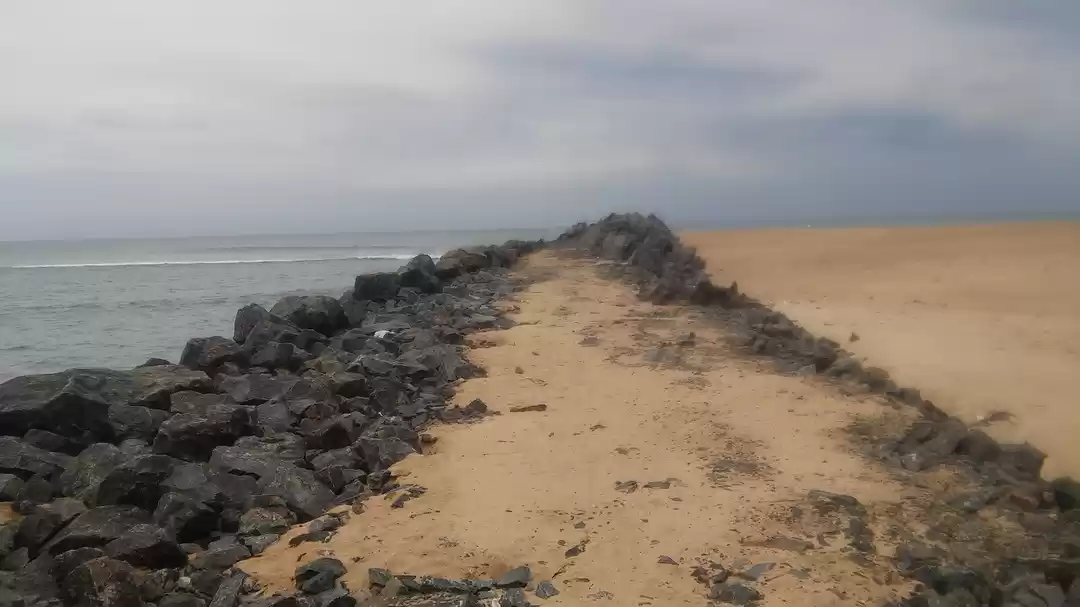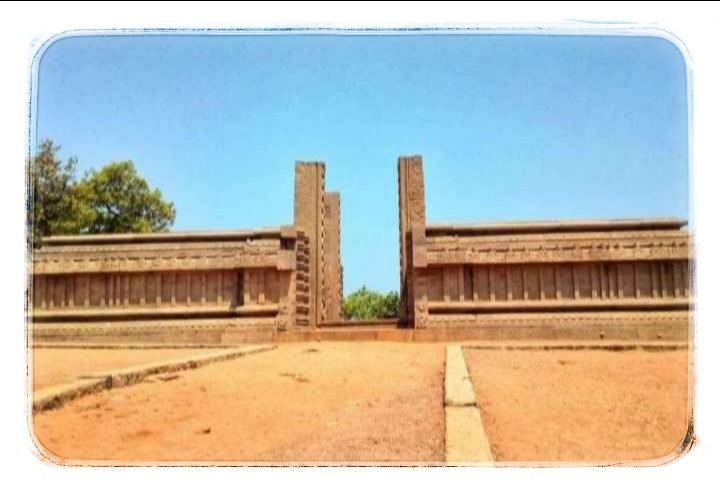
Mahabalipuram:
Also known as Mamallapuram, one of the UNESCO's World Heritage site since 1984, this is located at Kanchi puram district in Tamil Nadu. This place is named after Pallava king, Narasimhavarman 1, who is also called as mamalla. 'Mamalla' denotes a man with boldness and strength, a great wrestler.
Inspiration to visit Mamallapuram:
It's started the moment when I began to read 'Sivagamiyin Sabatham' written by Amarar Kalki. As a renowned writer, Kalki's writings are the best to inspire more to learn about History.
How to reach to Shore Temple?
It is located in the front of Mamallapuram Bus stand, towards the east.
As you walk along the path towards the shore temple, there are some unique places which captures attention. Mamallapuram Town panchayat is built a vertical garden along the way. There is also an icecream shop, which is eco-friendly and it has some sculptures. After this, there are so many handicrafts shops too.
Inside the first entrance:
Archaeological Survey of India along with Horticulture wing is planning for a better garden in some acres. And it is maintained very well too
Inside second entrance:
Beach is visible from here, in right and left and temple in front. Temple consists of three shrines. It has many Nandi's as compound wall to it. Shore temple is built during Narasimhavarman 2 who is Rajasimha.
Shore Temple:
This temple is considered to be one of the seven pagodas of Mahabalipuram. Seven pagodas whether it's a myth or reality? Seven pagodas is the group of temples built near the shore facing east. According to this, six remaining temples are missing. There are so many studies to find what exactly it's all about. During 2004 tsunami, it opened eyes as it took sea inside, everyone saw many rocks and walls inside the sea. It's an evidence that temples submerged over here. These temples have a link to Sangam period itself and also pallavas. So, this place is well known even before Pallava dynasty. It is not proved to be seven pagodas yet, there is no confirmation regarding that. This temple has one Vishnu shrine and 2 Shiva's shrine. This monument is structural one built with blocks of granite. Full temple is above a bed rock for many years. Afterall it is standing for almost 13 centuries now. As it is so close to sea, this place can get easily eroded by salts. So preservation is very mandatory to keep this structure safe. ASI is treating the temple with wall paper pulp and also chemical treatment, to clear the water which tries to go inside the rock.
It's one of the monument which stood the test of times. (13th century tsunami and also 2004 tsunami too) if you ever get an opportunity to visit here, don't miss it.
Five Chariots:
Five chariots are chariots of Pandavas, made out of one solid rock. It's near by the shore.
How to reach Five Chariots:
It's south to the bus stand of Mahabalipuram.
On the way, there are many sculpture shops, if you are interested to buy, walk along five chariots road, you will find many sculptures. After reaching five Chariots, you can see there are 5 rathas (chariots) and also an elephant. There are left over solid rock pieces too. Dharmaraja's ratha is the largest among all, These rathas are not based on history of Pandavas, rather it says about the personality and nature of 5 Pandavas. Draupadi got the most elegant ratha and nakula - Sahadeva got one together
From these chariots, we can see beach behind and near this, like shore temple, they are maintaining garden in smaller area compared to shore temple.

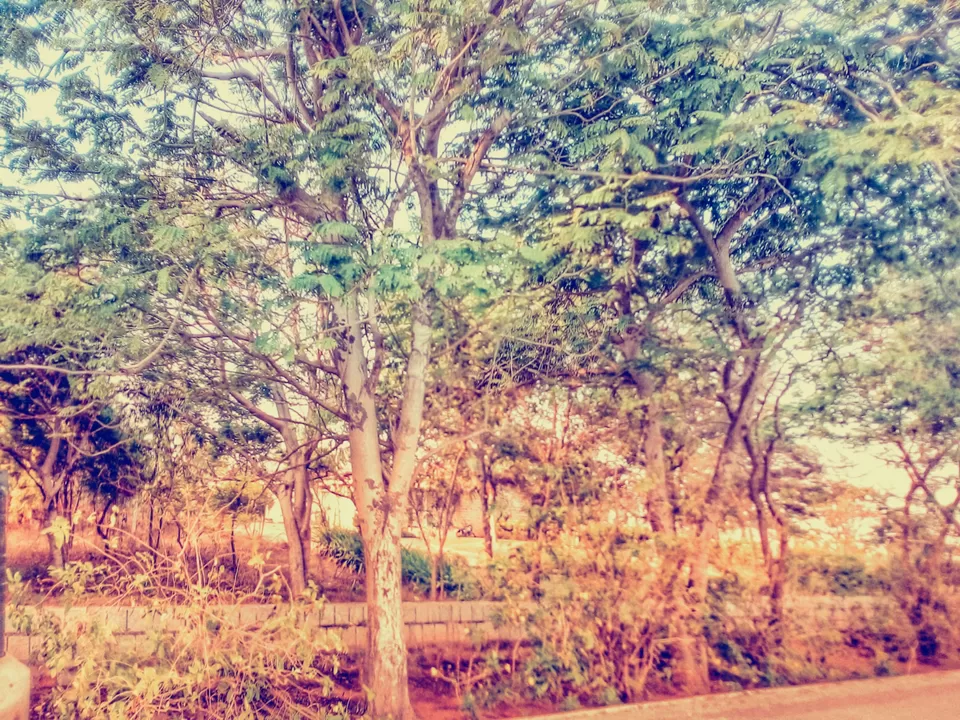
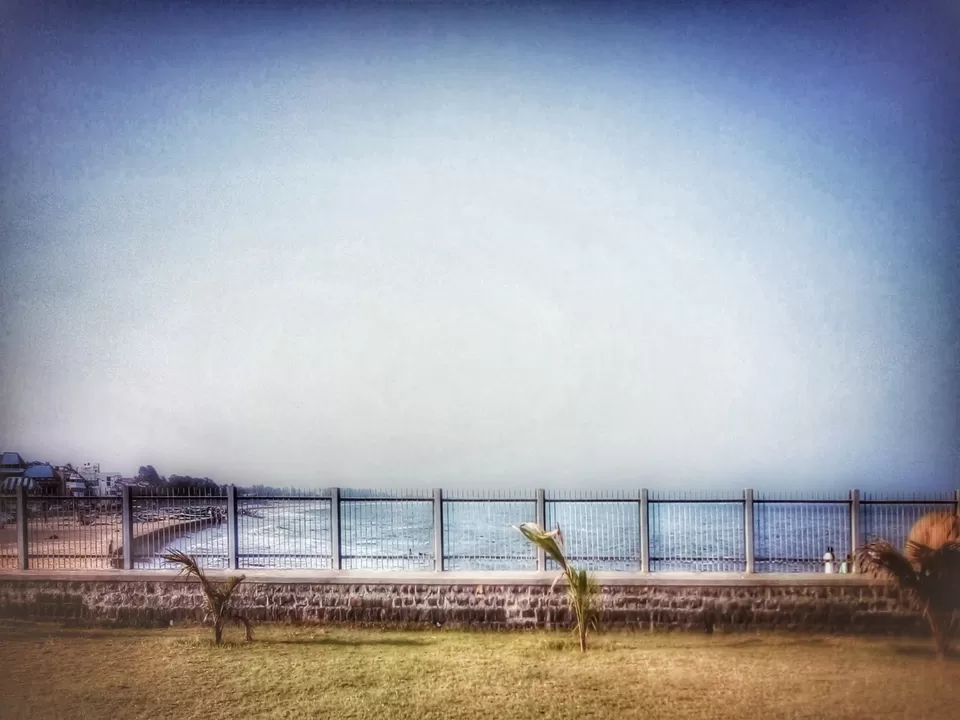
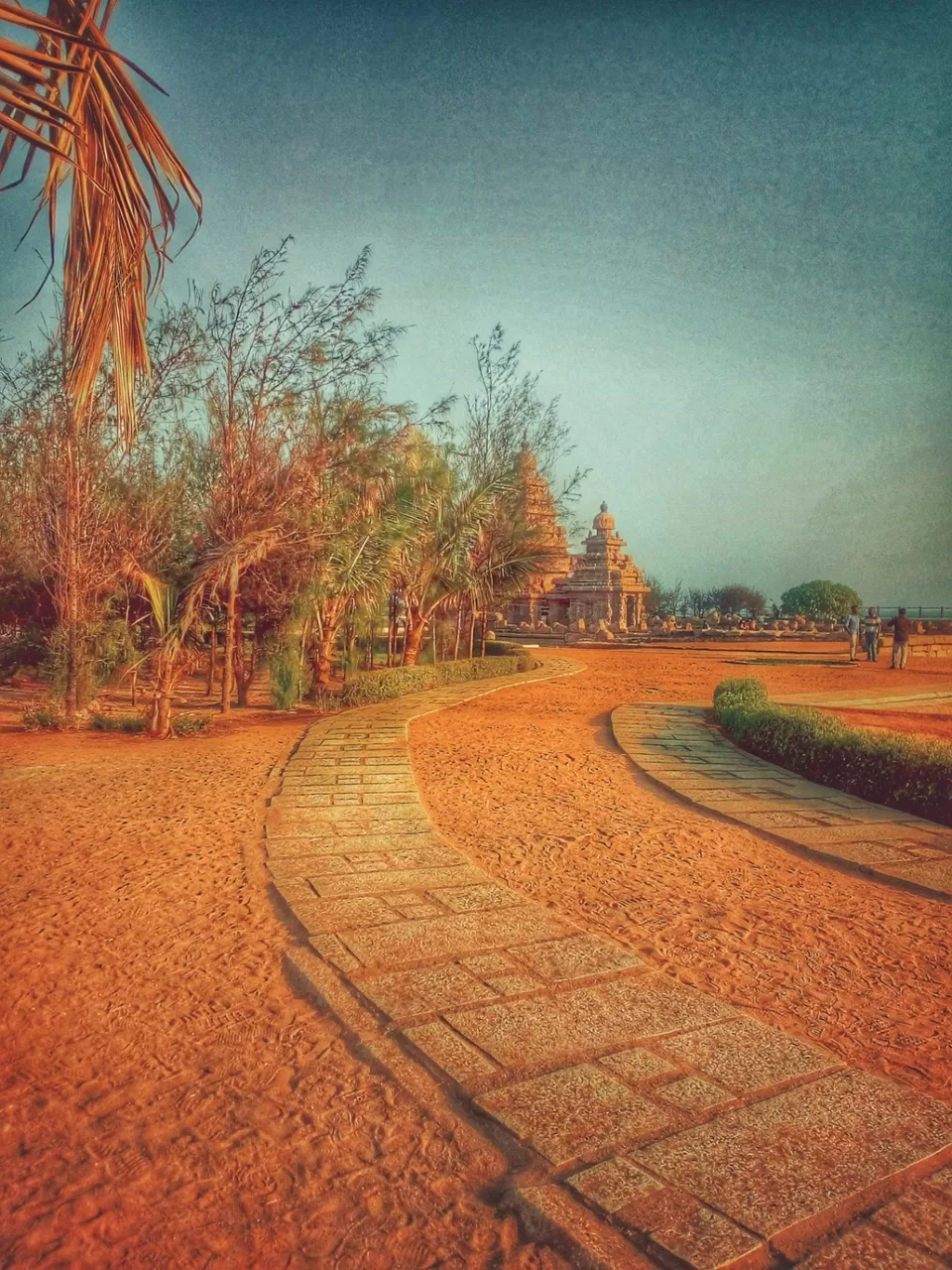
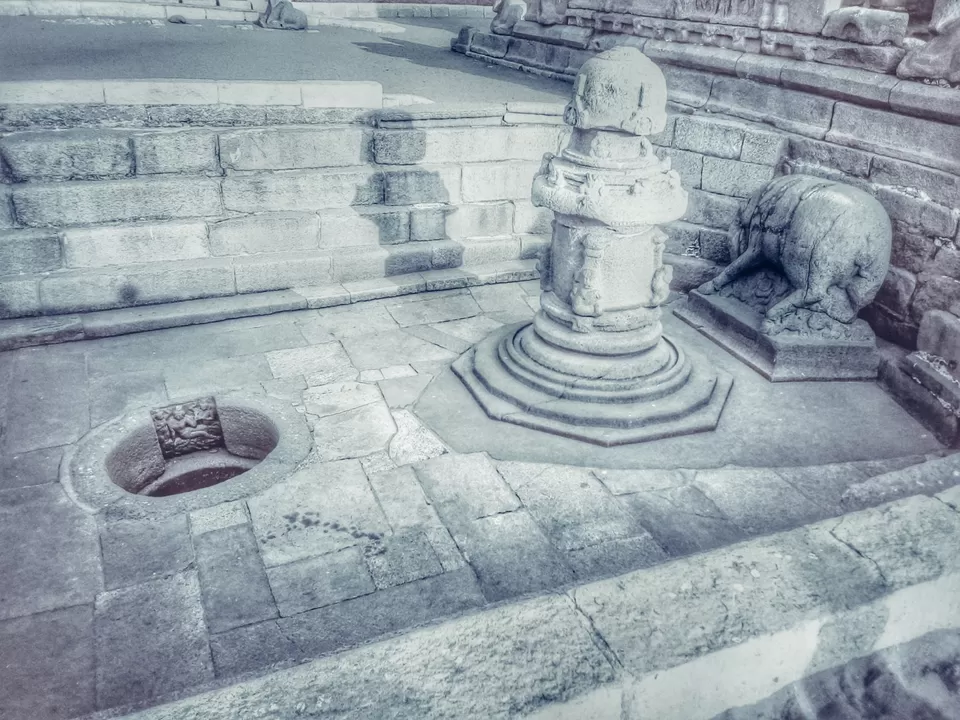
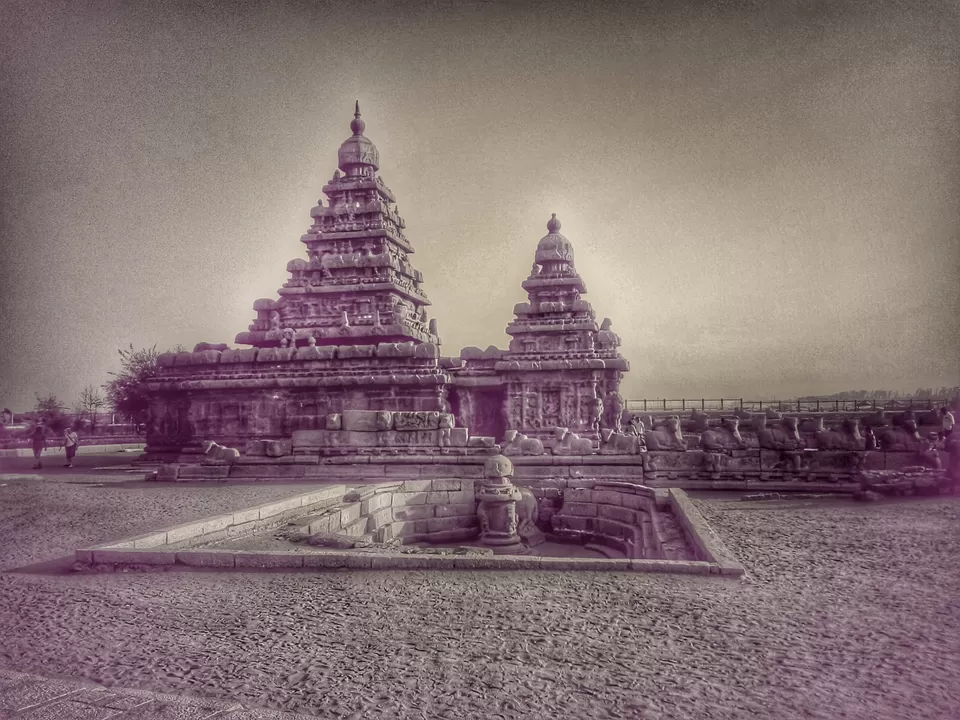
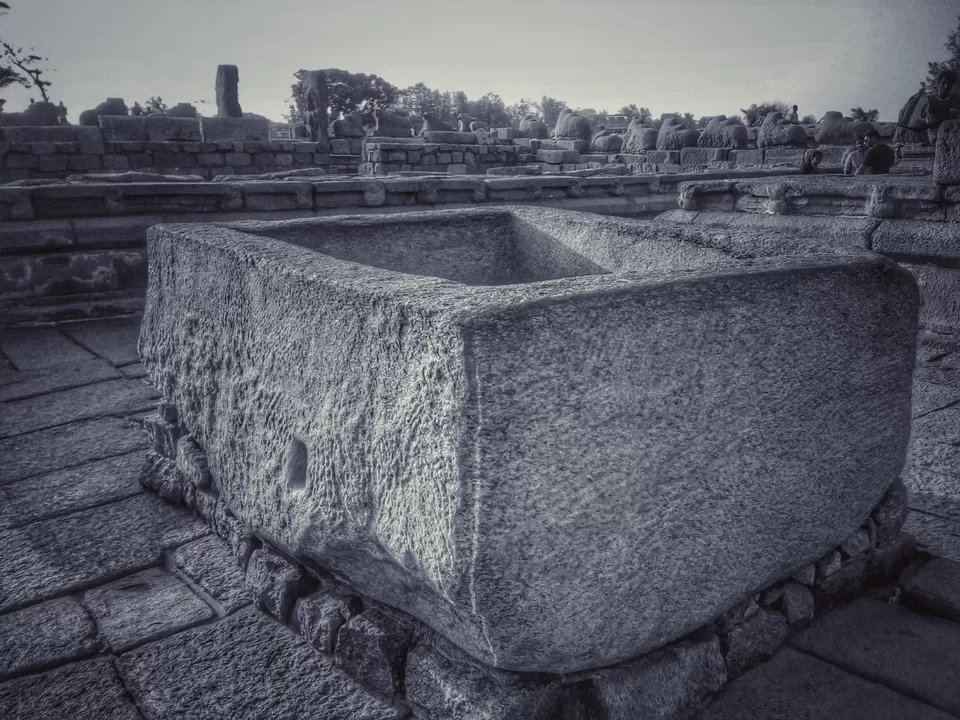
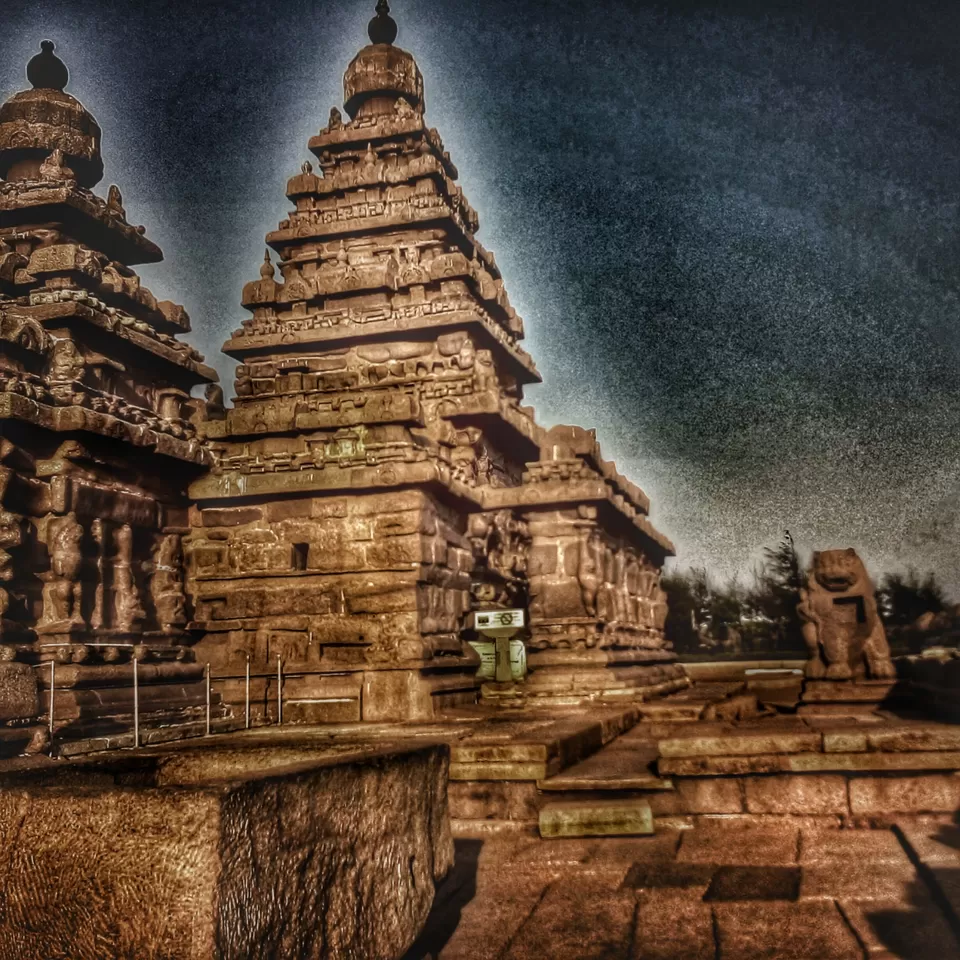
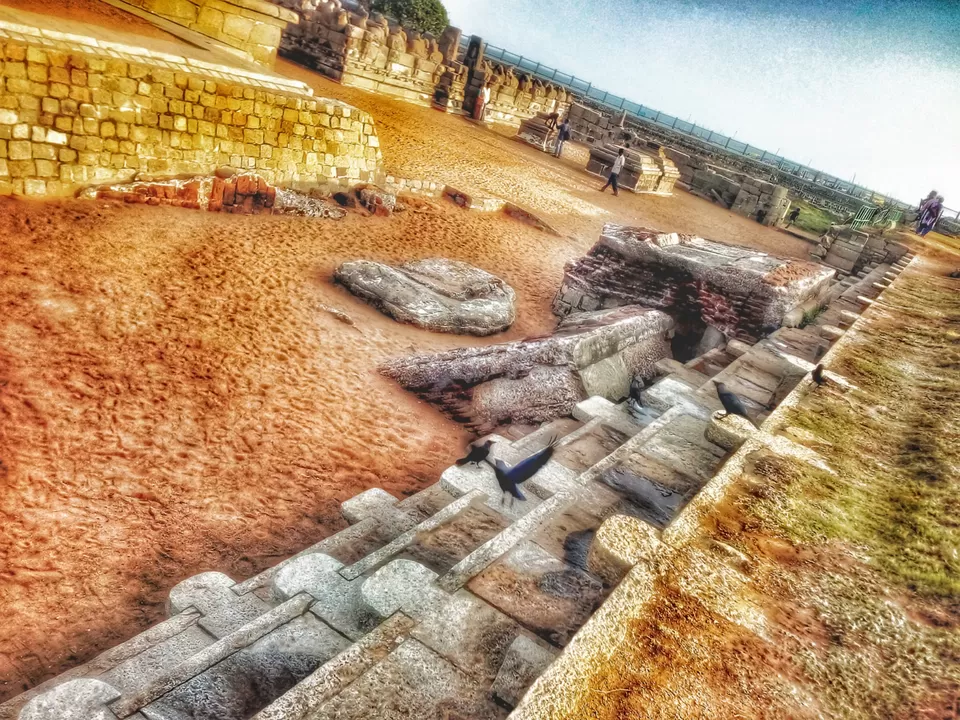
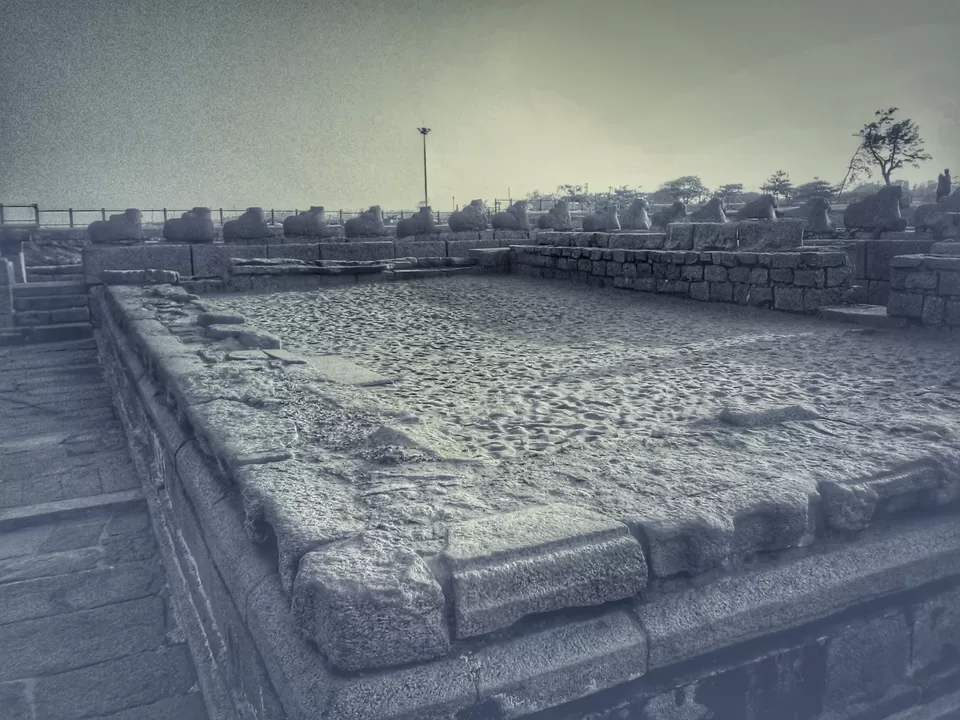
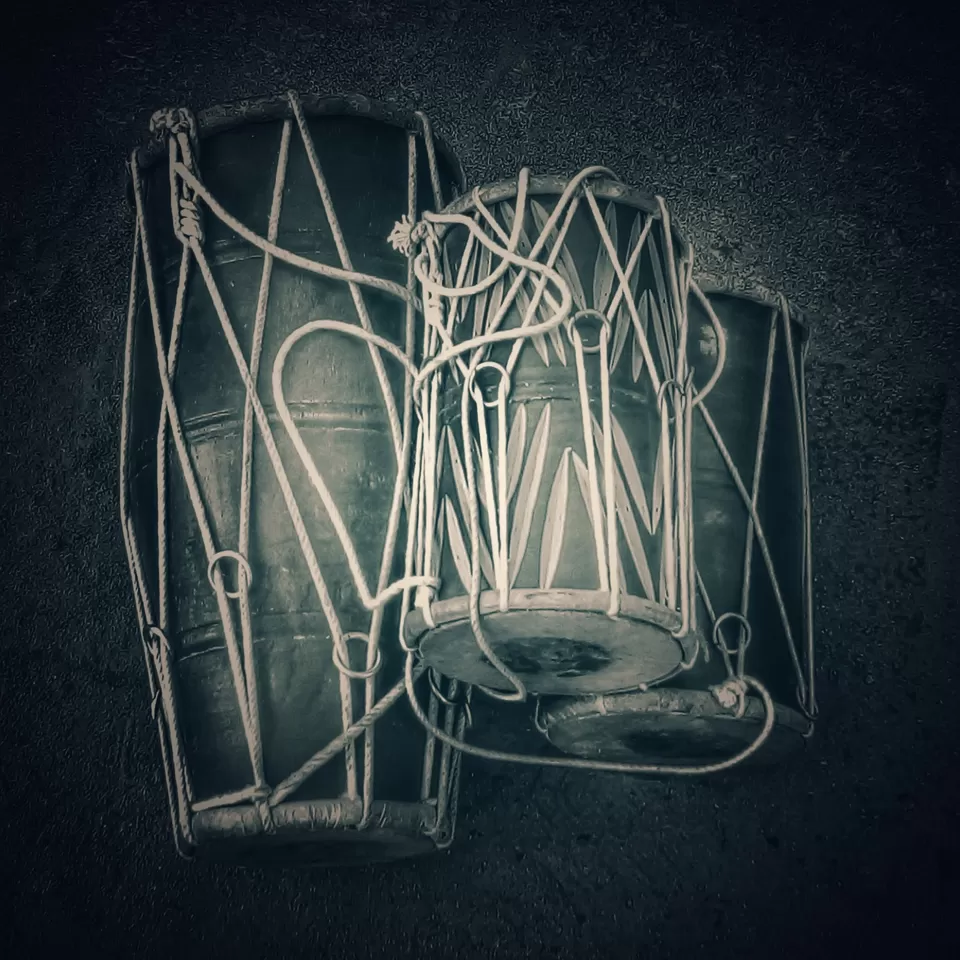
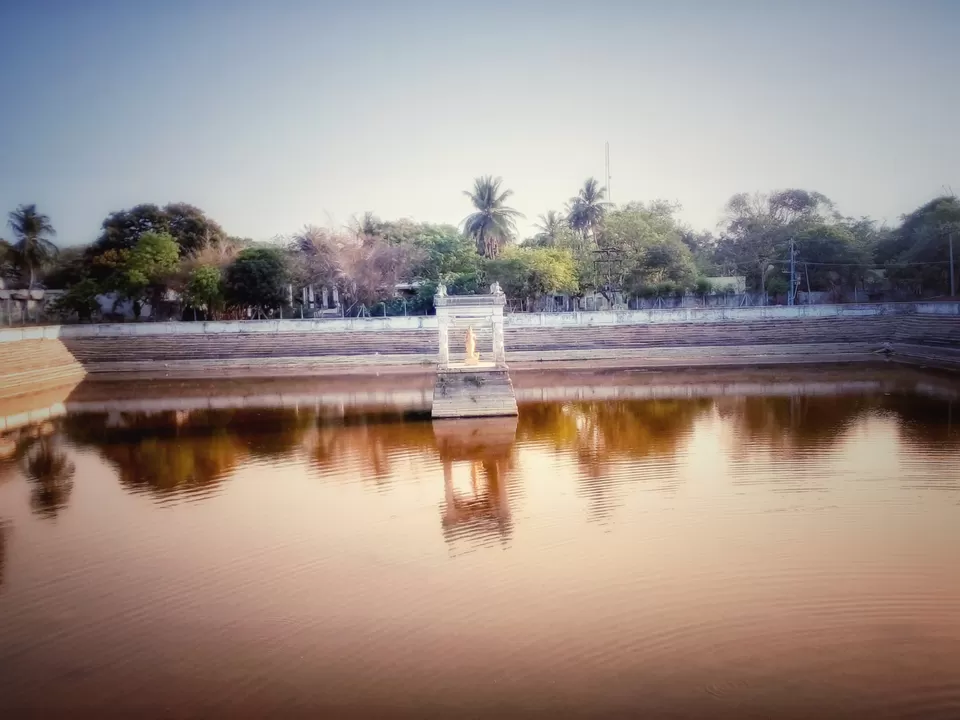
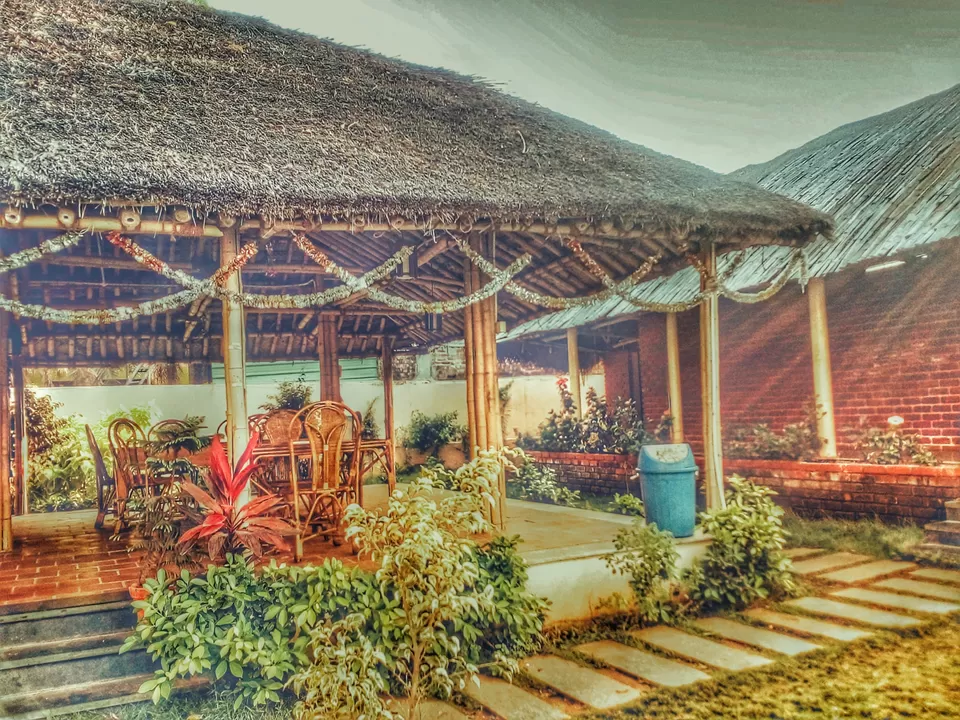
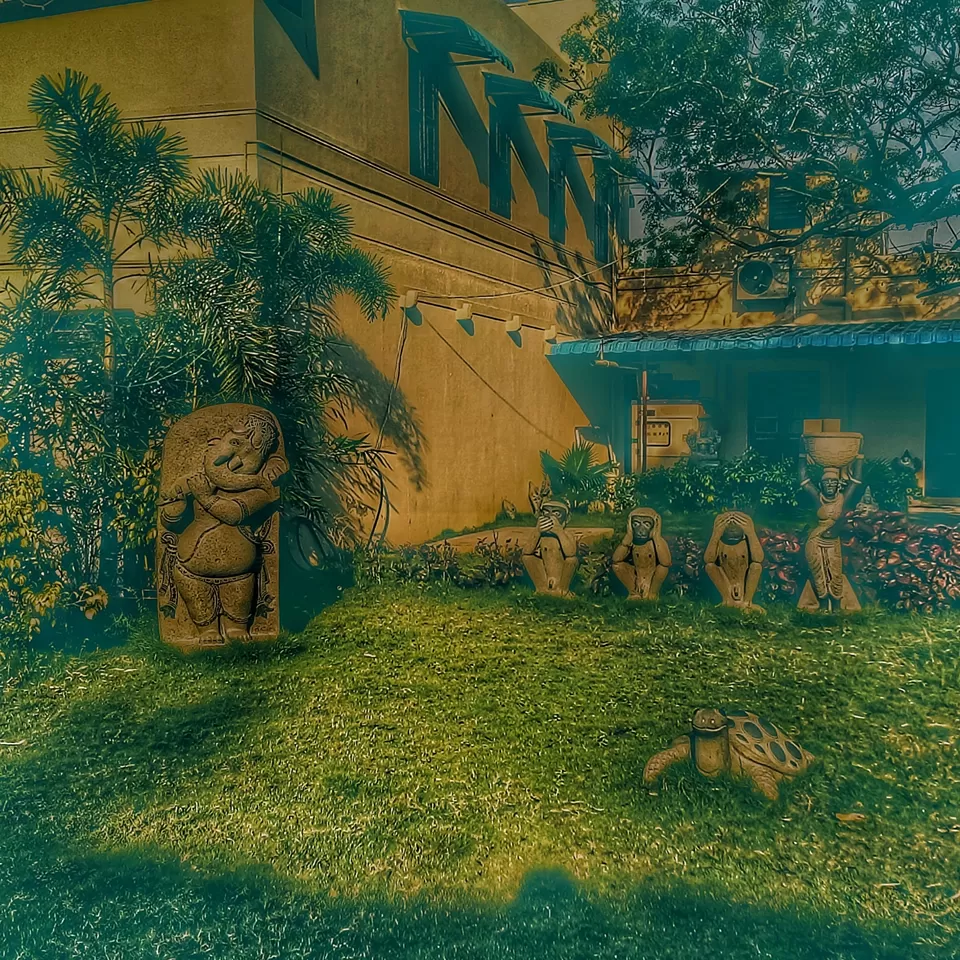
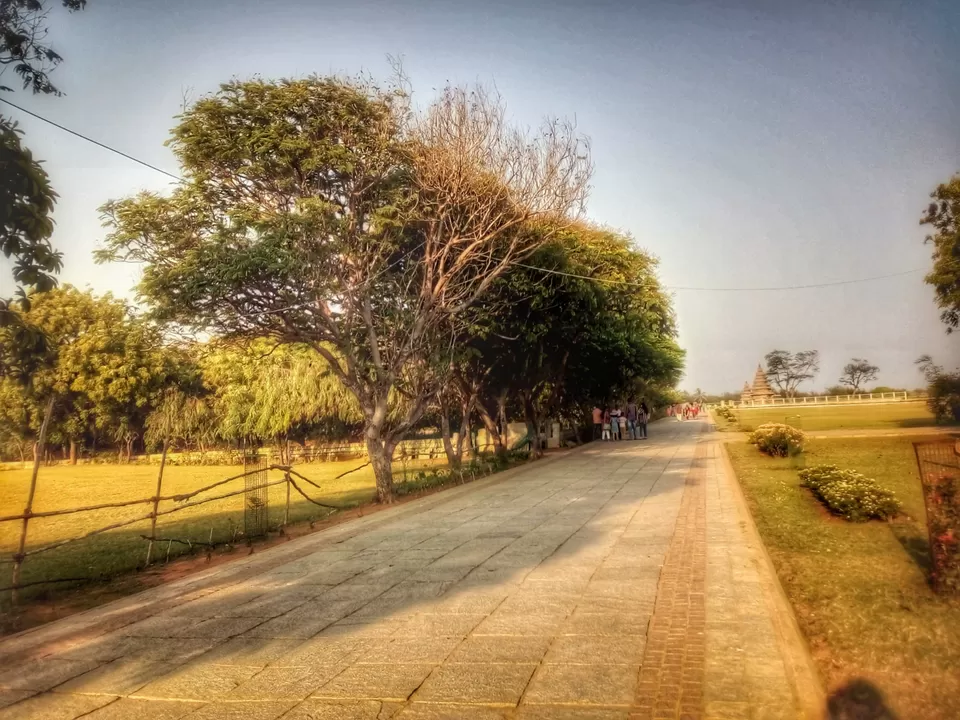
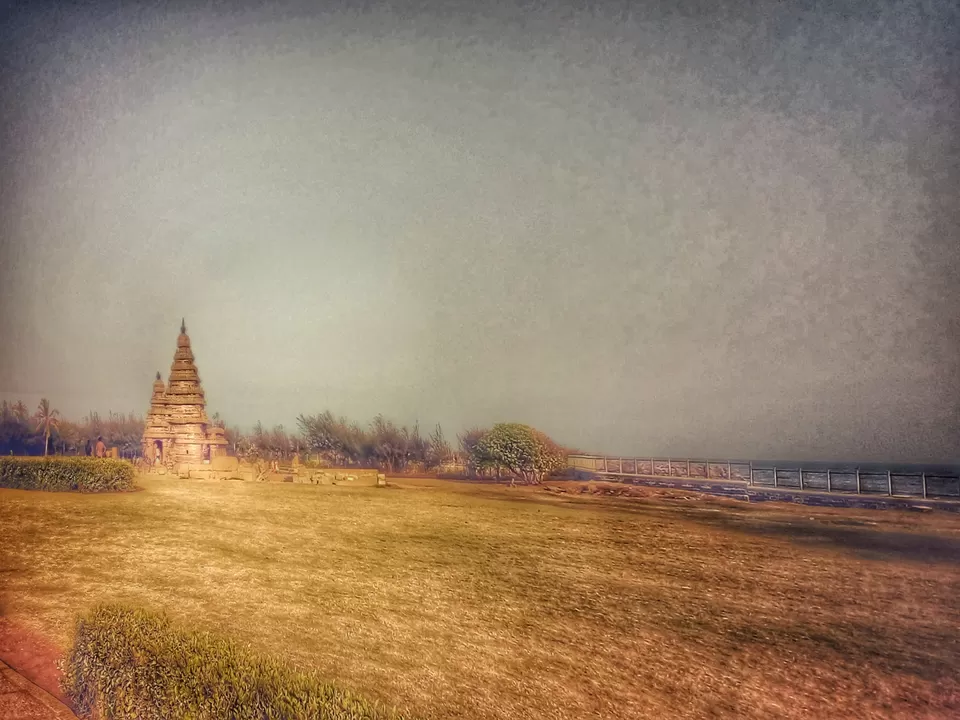
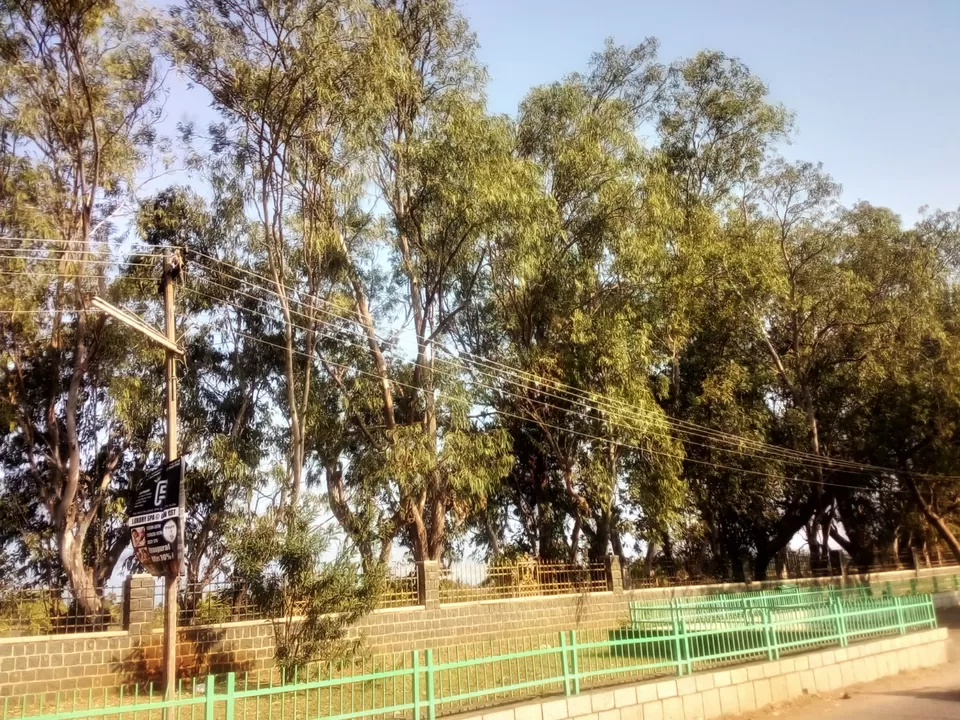
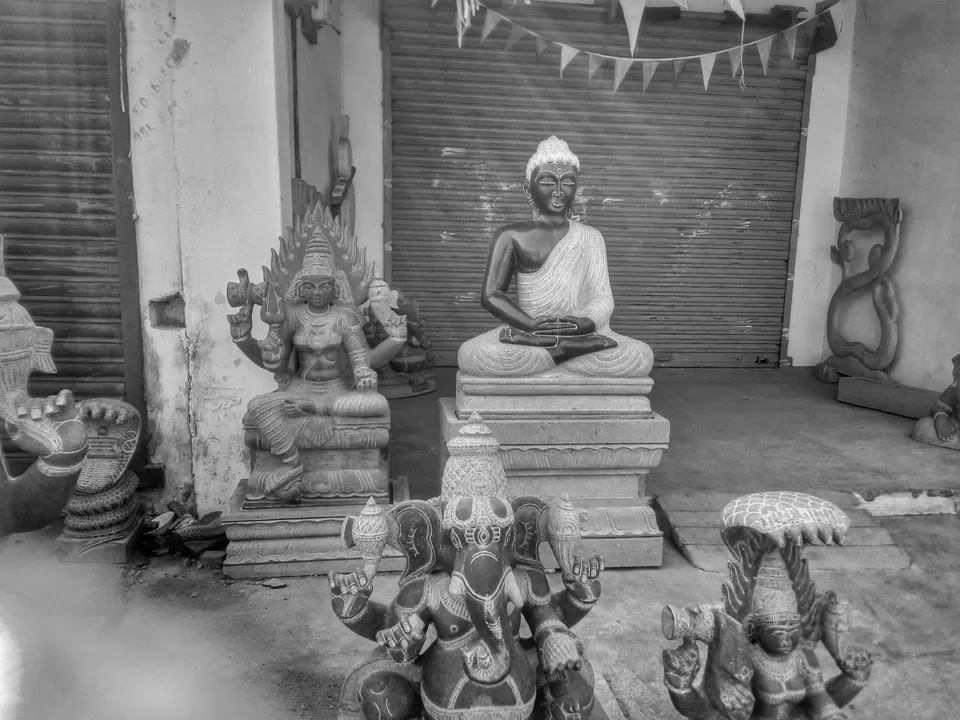
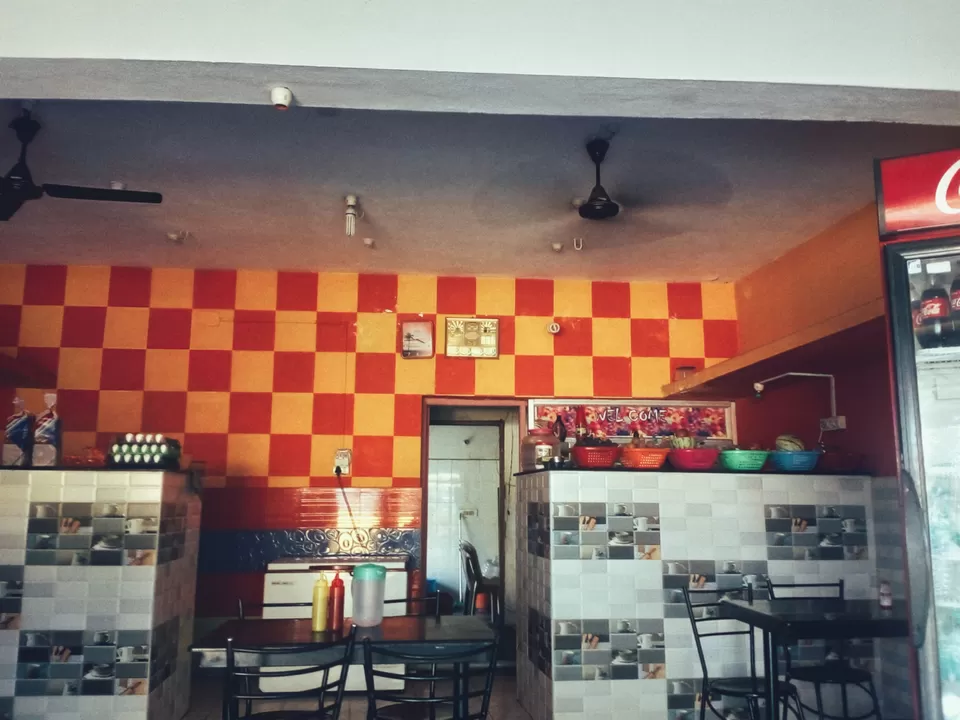
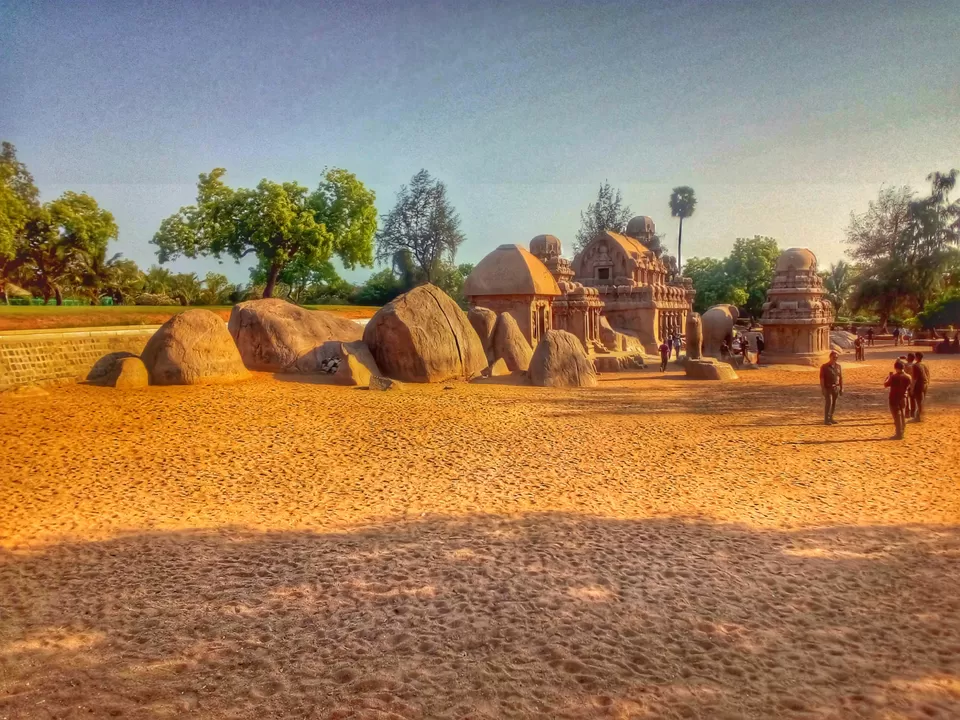
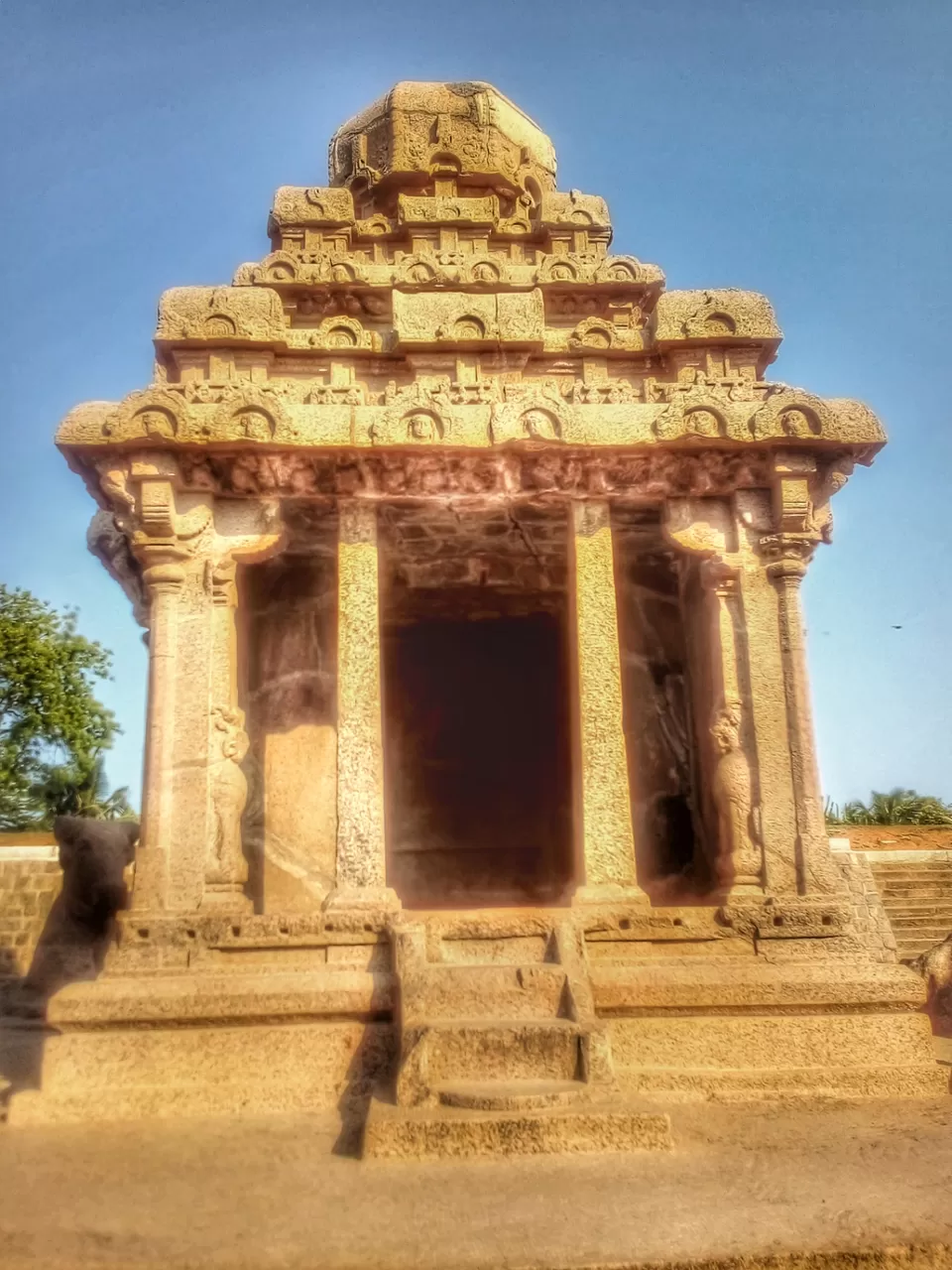
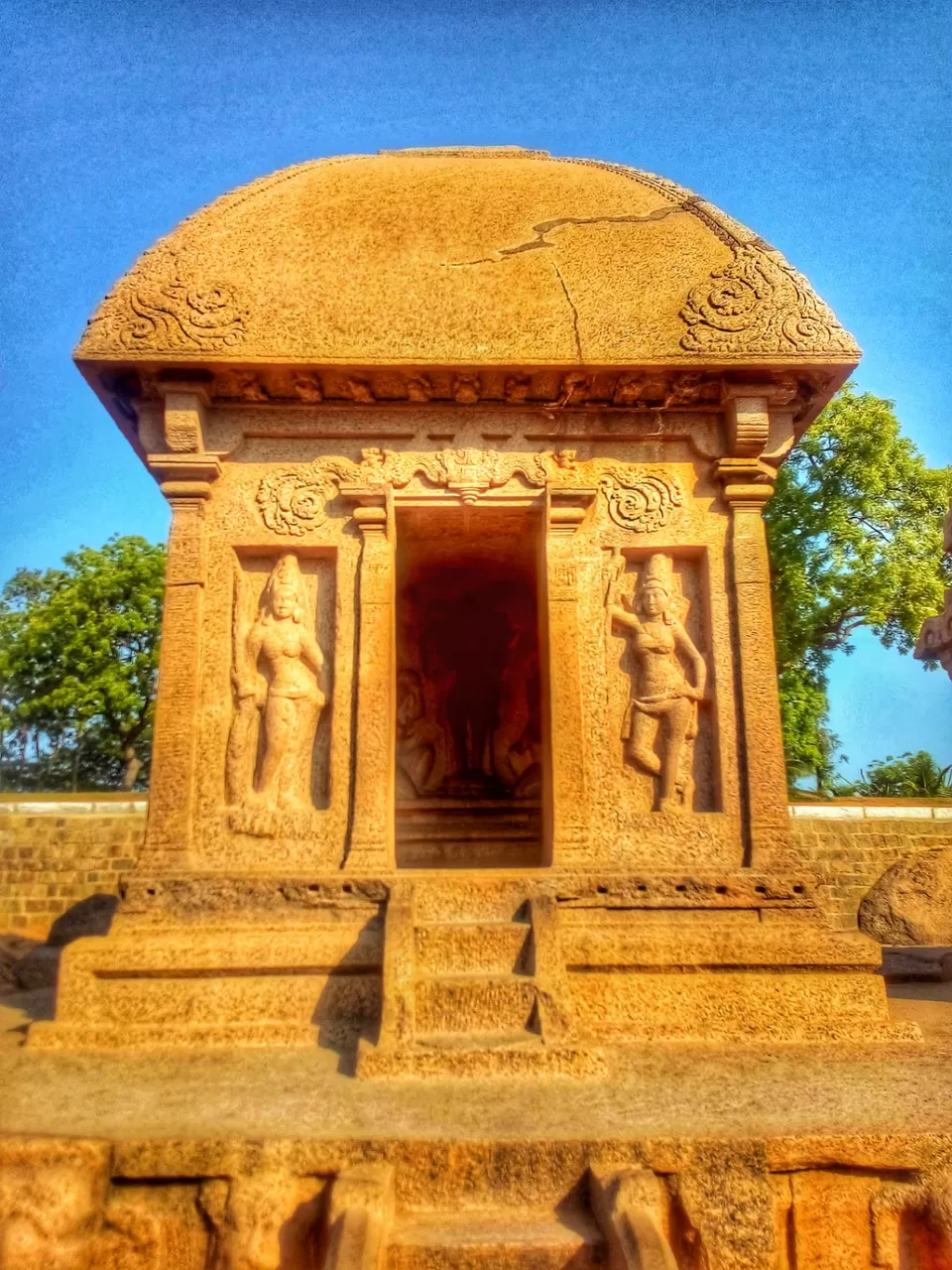
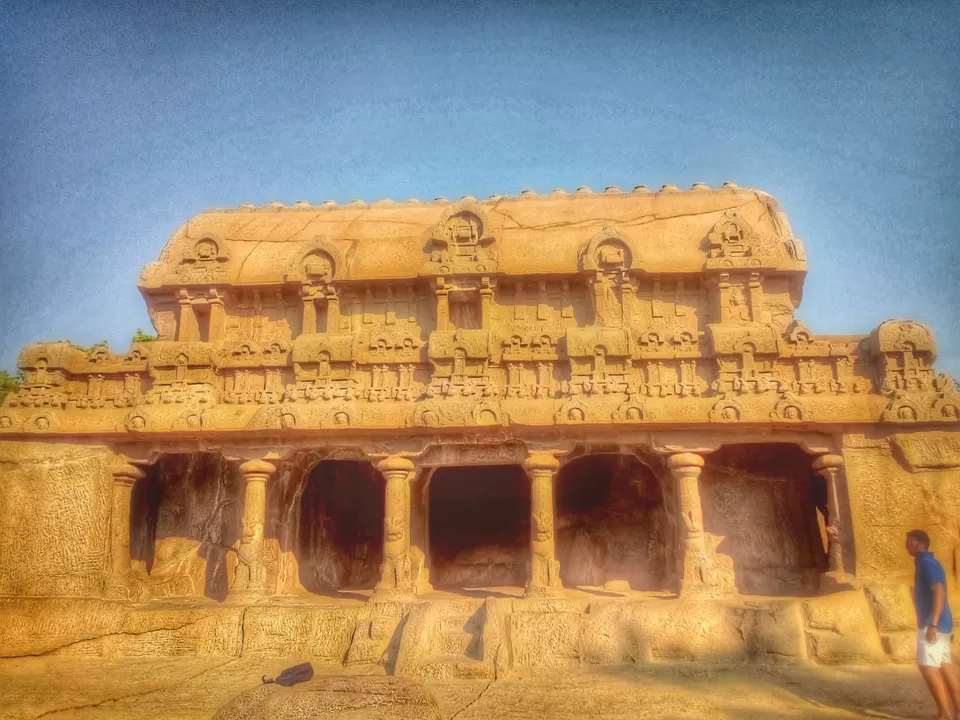
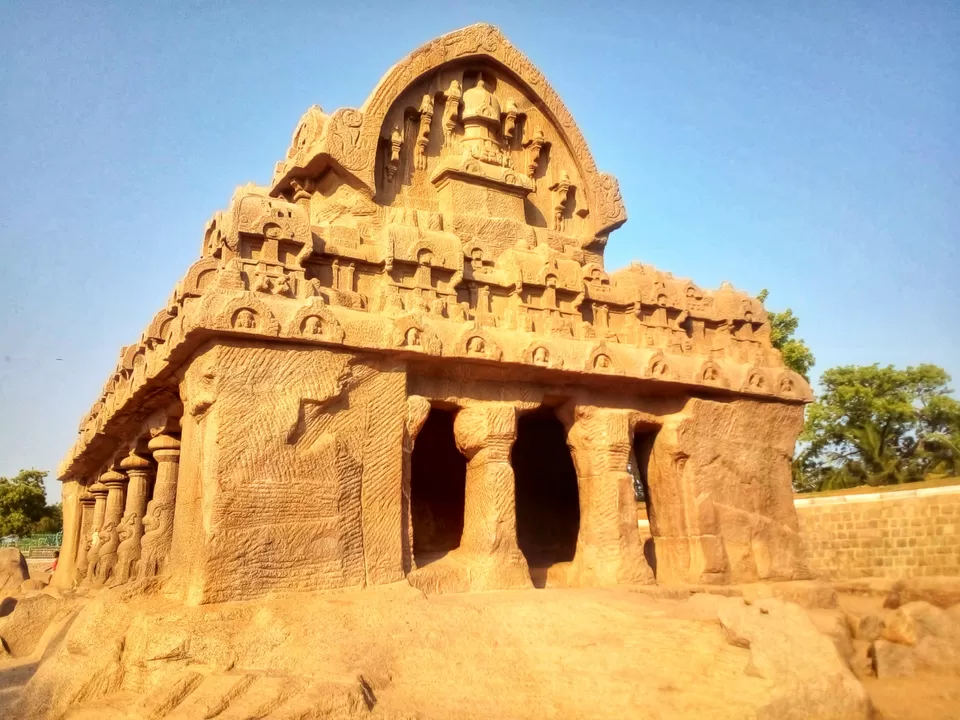
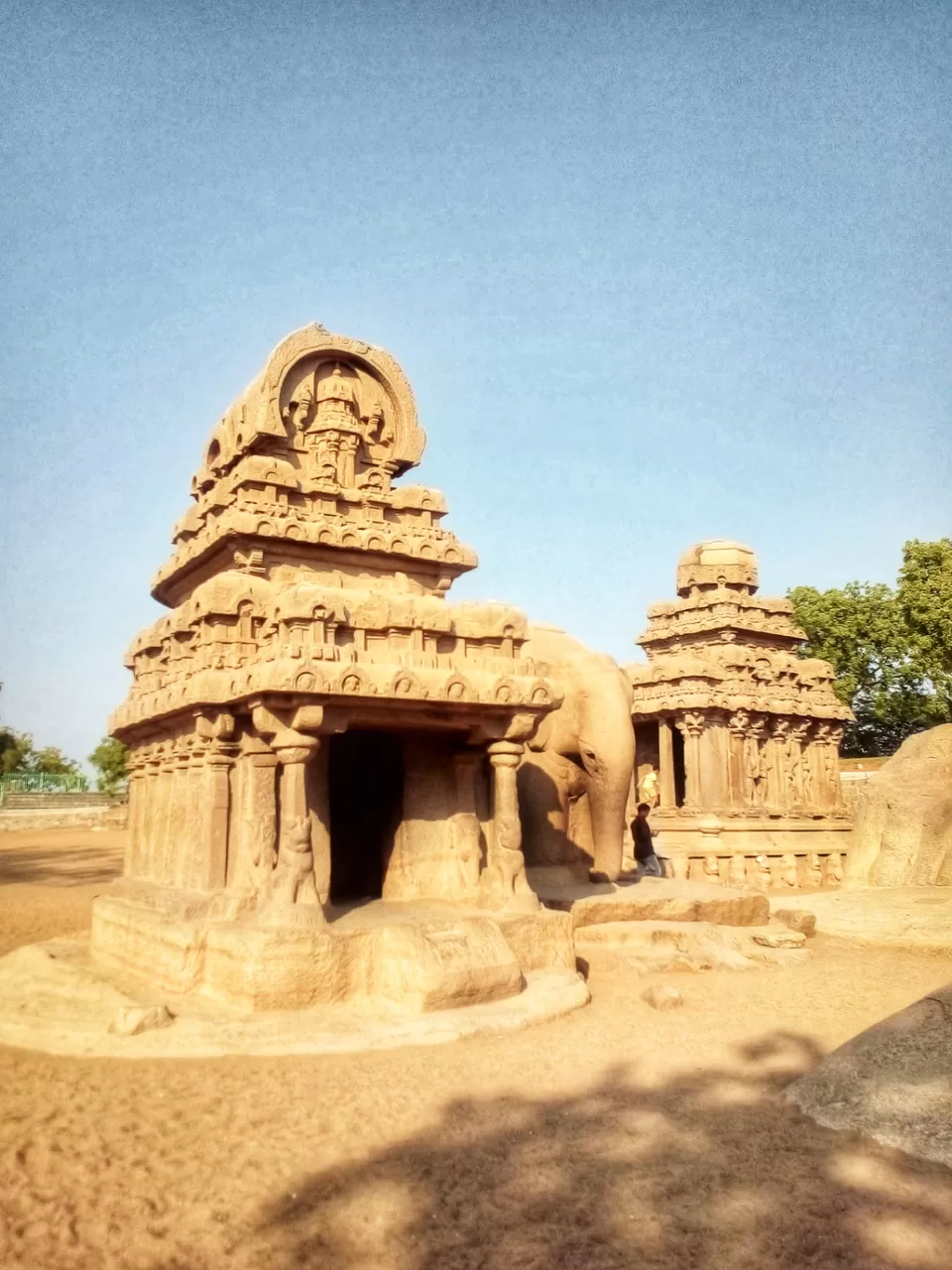
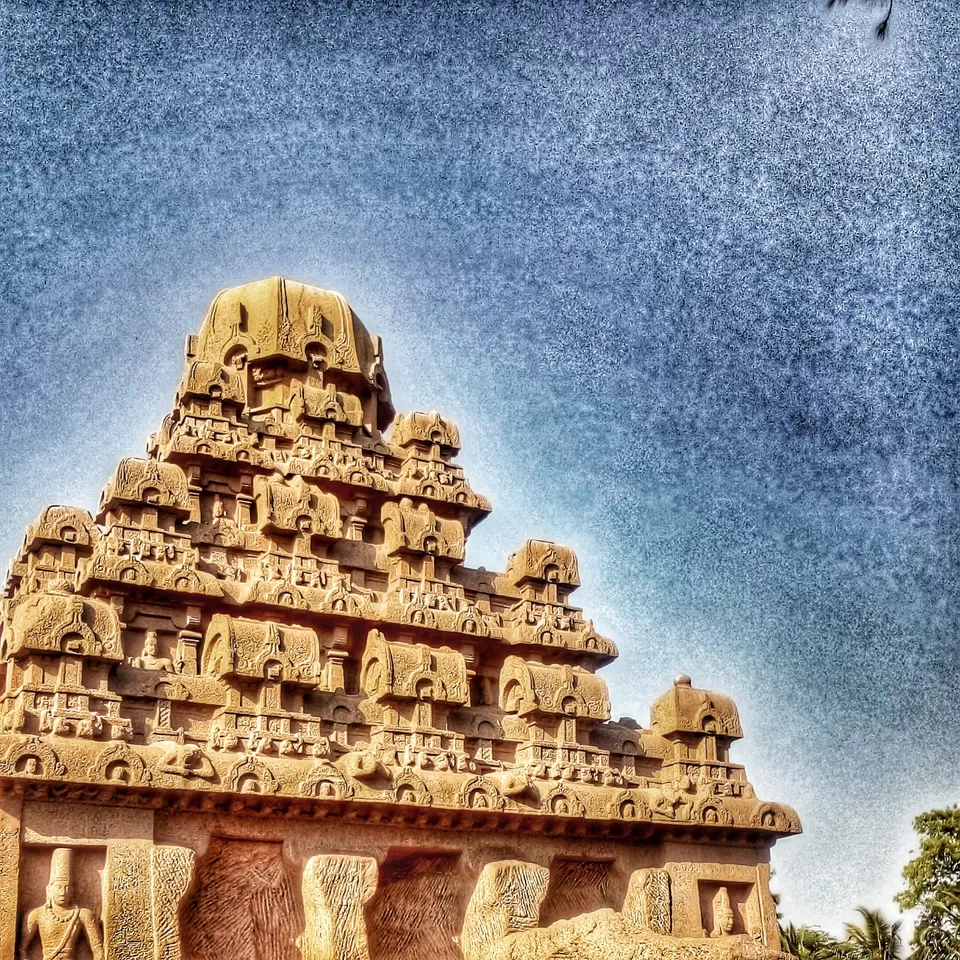
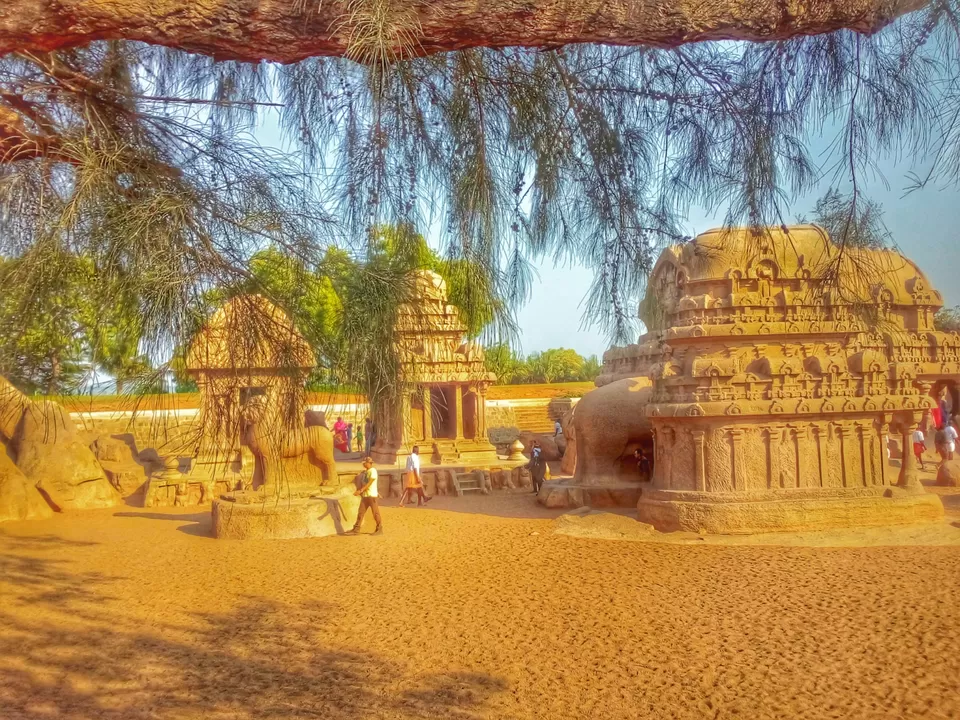
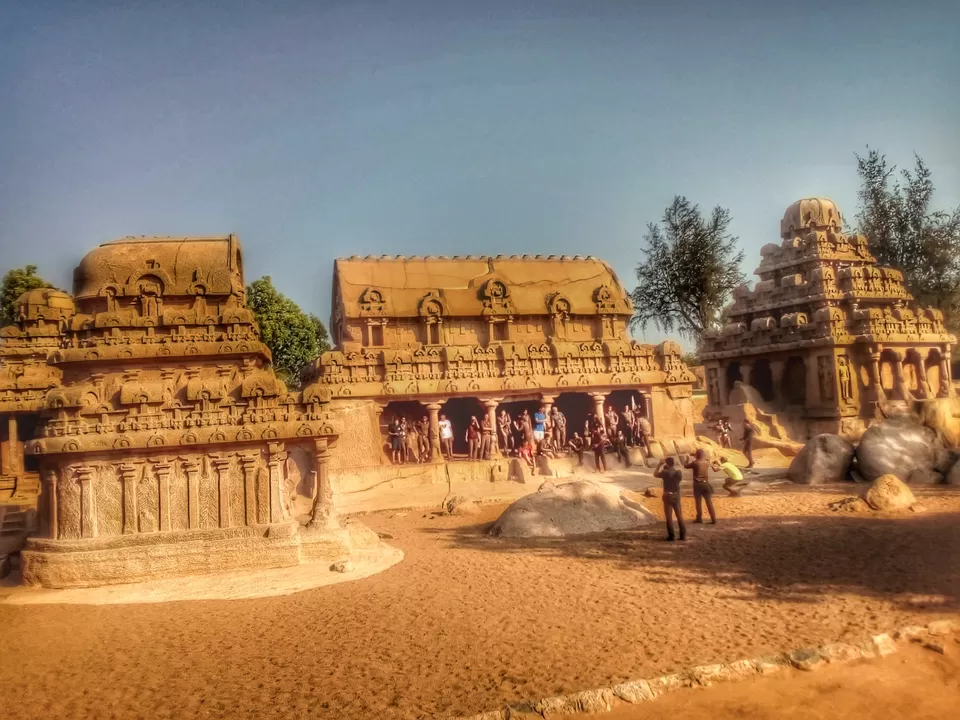
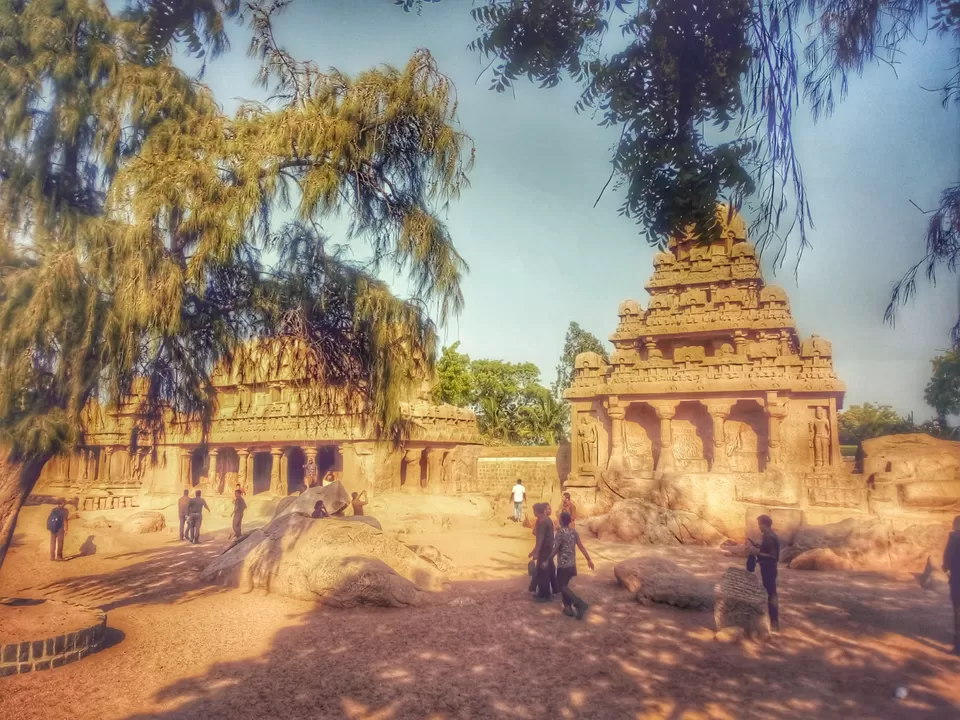
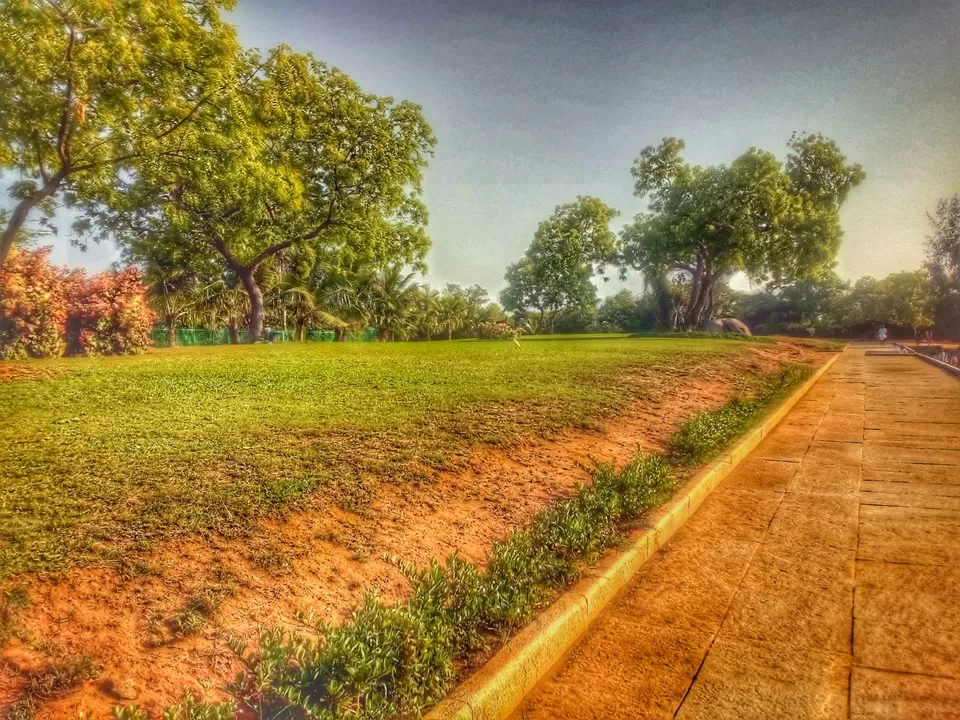
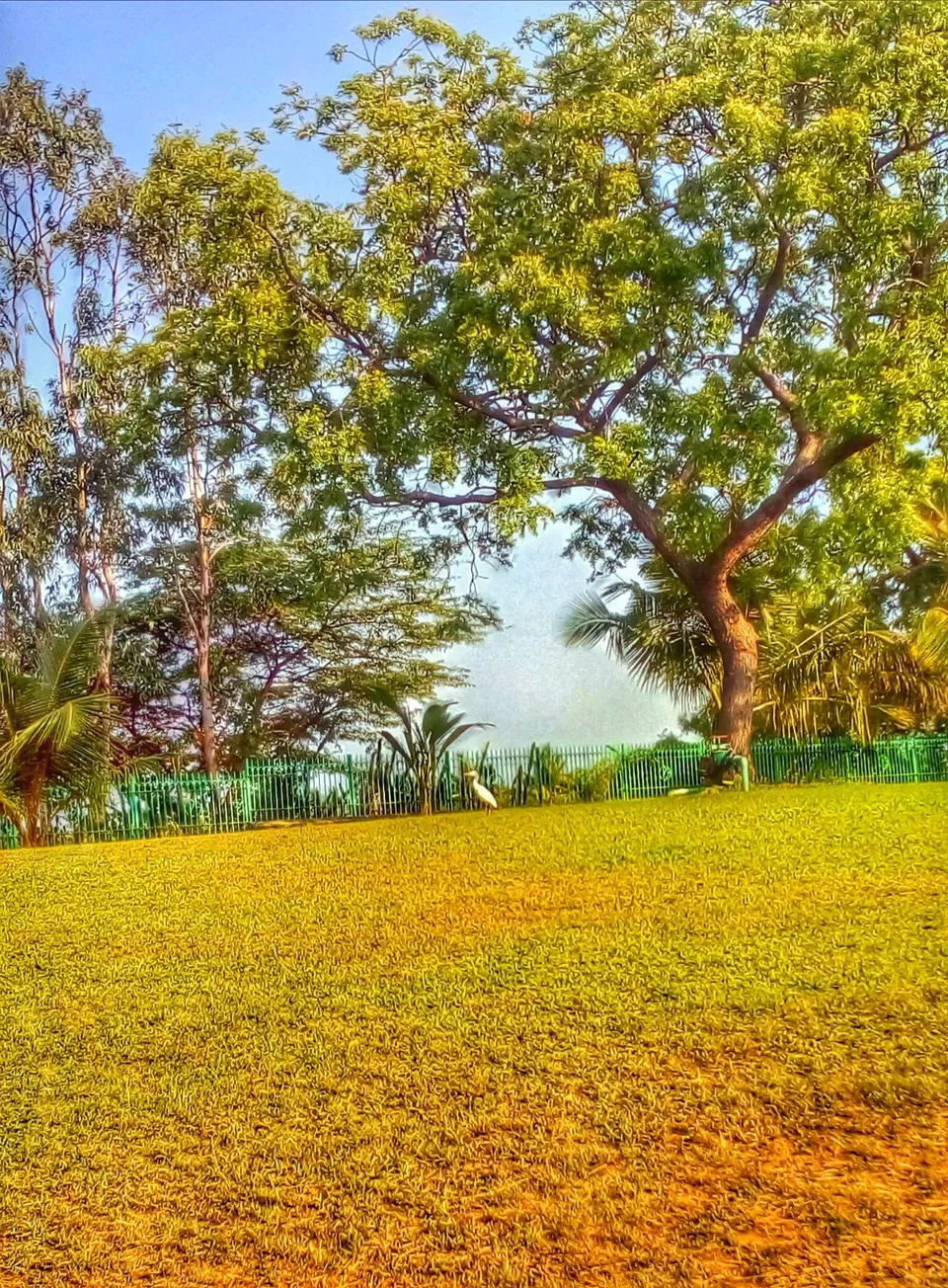
Light houses and Rock cut architectures:
Light houses:
Old light house & New light house:
Both these light houses stand adjacent to each other. Olakkaniswara temple was the temple of Siva initially. This Siva lingam was removed due to some attacks. During British time, this place is used as light house, for their commerical and navigation purposes. Just the roof was modified to serve as light house for all.
Detailed light house equipments and marine ship models are preserved in the light house museum near by. Each and every equipment in this museum has different purposes and shows the knowledge of physics from the people of past.
Rock - cut cave architectures:
Overall rock - cut architecture of Pallavas is transitional style of architecture. All the Pallava kings adapted according to the change around them and allowed the arts to cherish in their kingdom. I marvel looking at the beauty of some sculptures which could have taken so much hardwork of sculptors. Mostly if you started this journey early morning then, rock cut architecture is the best place to start with, then light house and then you can finish the day with five chariots, shore temple with the beach. This is the recommendation of locals and residents of the town as this whole area is covered like a circle in the Mamallapuram Town. There are many guides, references about this town, has been published by Archeological Survey of India.
While thinking about these, I thought why exactly Pallavas worked so harder those times. It was competition of power, and each kingdom wanted to prove their ability to the maximum so that the kingdom sustains. This town, Mamallapuram, existed for a long time but got fame only after great hero, Mamalla, Narasimhavarman 1. These rock cut caves architecture flourished during the period of Narasimhavarman 1, Narasimhavarman 2 and also mamalla's father, Mahendravarman 1.
Krishna's butterball:
It is half - spherical gigantic granite boulder, it is standing for 1200 years now , on a short incline. Narasimhavarman 1 and also governor Arthur Havelock tried to move this due to safety concerns. But both of them failed. Seven elephants also used to mobilize this, but it didn't move.
It is considered to be one of the incredible natural wonders in India, situated in northwest direction from Mamallapuram Bus stand.
Thirumurti cave:
To the right of Krishna's butterball, there's tirumuti cave and elephant group.
Trimurti cave has Shiva in the centre and Brahma and Vishnu in the sides.
Elephant group :
It has a monkey, elephants and peacock carved in a very unique way. There are two adult elephants and also small ones. It showcases the family of an elephant very well.
Monkey group:
This one is quite interesting. It showcases family of monkey, one monkey looks for lices on other, and third one is sleeping on the lap of mother monkey. This speaks love of monkey family in stones while in the same spot, I found real monkeys in groups, they are enjoying their time with one another, playing.
Krishna mandapa :
This mandapa tells about the tale of Krishna, how he saved the group of cowherds men. He lifted a mountain to protect those, and this scene is perfectly carved in this mandapa.
Draupadi bath:
It's almost a rectangular carvings resembling a bath tub. Opposite to this bath tub, I saw a stagnant water lake filled with lotus and other flowers.
Rayagopuram:
It is an unfinished gopuram of Mahabalipuram. Raya's meaning in tamil is ' big or large '. It's one of the highest place in the rock - cut caves.
Varaha Cave Temple:
Nearby Raya gopuram , there is a temple for Vishnu named as Varaha cave temple. The carvings here tells about the incarnation of Vishnu as Varaha (boar) to save earth.
Ganesha ratha:
It's same like five chariots, formed from one single rock, initially there was a Siva lingam, now it is replaced by Ganesha.
Panchapandva cave temple:
It is built around mamalla period. It's next to Arjuna's penance and it is incomplete too. There are some caves left unfinished.
Descents of the Ganges and Arjuna's penance:
It is a giant open air relief, made of two solid rock boulders. Descent of the Ganges tells the story of Ganges descend to the earth following Bhagiratha. Almost situated at the centre of the town, it looks like a canvas, which is quite unique for this architecture.
As we all aware, Mahabalipuram is one of the best place to visit, and makes everyone to see the past with different eyes, additionally I am sharing my small thoughts regarding this awesome ancestor's gifts , more than tourist spot and known for the pallava kingdom , Mahabalipuram has unsaid tales in its deep roots. King Narasimhavarman is famous, all the kings of Pallavas got name and fame throughout so many centuries, Here arises a question, Who really remembers the sculptor almost died to present these great sculptures for us now? More than sculptors, there might be people worked for the mobilisation of rocks, if you come and see the rocks of Mahabalipuram, you will realise how much it would be hard. Go for the past for a moment, and imagine the lives of those people and their civilization, we all will get better picture. This world follows the same scenario even now, we respect the ones who has power in hand, but never recognises the farmer works for our food, daily wagers who works for our homes, Are we giving equal treatment and credit for them? Just like Mahabalipuram sculptors, there are so many common people working just for the welfare and nourishment of others. We are not aware of the names of those sculptors, but we can become aware of common people around us, and we can try to give honour and respect for their sacrifices.
Above that, it gives a lesson to sustain, Bay of Bengal is well known for its formation of cyclones every year as a sea shore, weathering and erosion is very common, still it just stays here, to make us remember the past. Added to these, Mahabalipuram acts as a gift as well as an inspiration for us from our ancestors, today we can view the past well due to its existence, whether our future generations will ever be able to look back at us like how we look back to Pallava kingdom? Only time can answer this question.
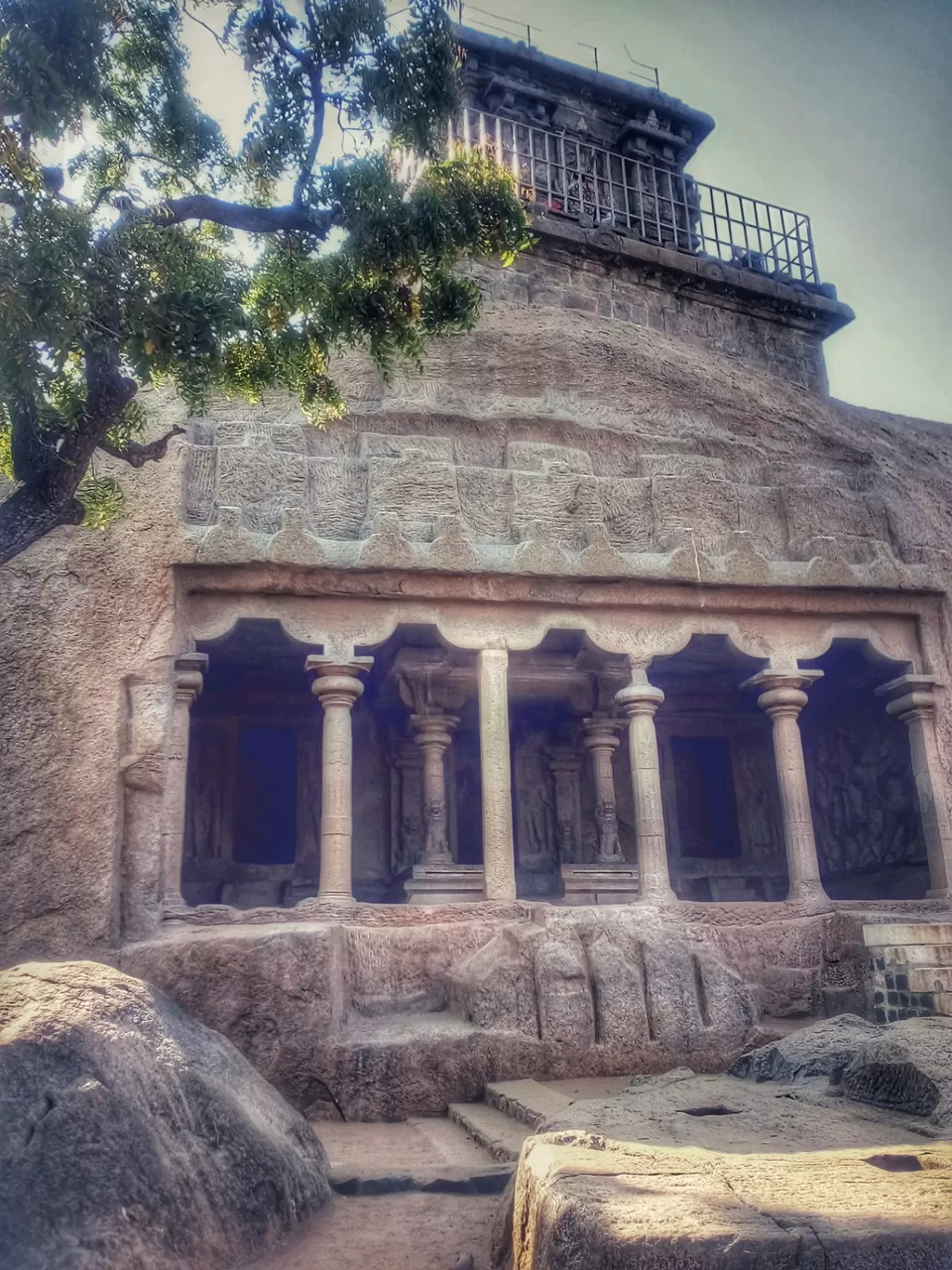
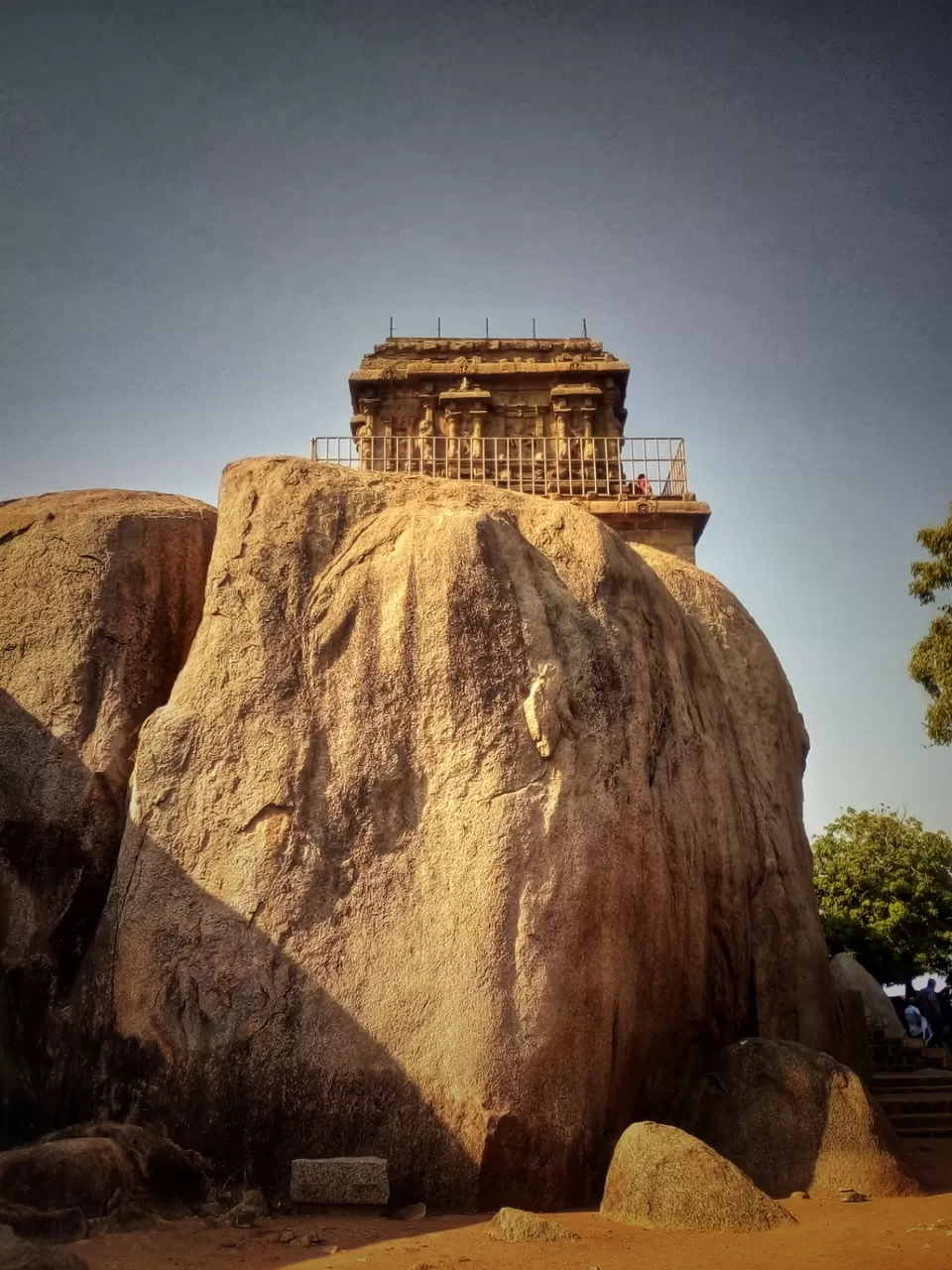
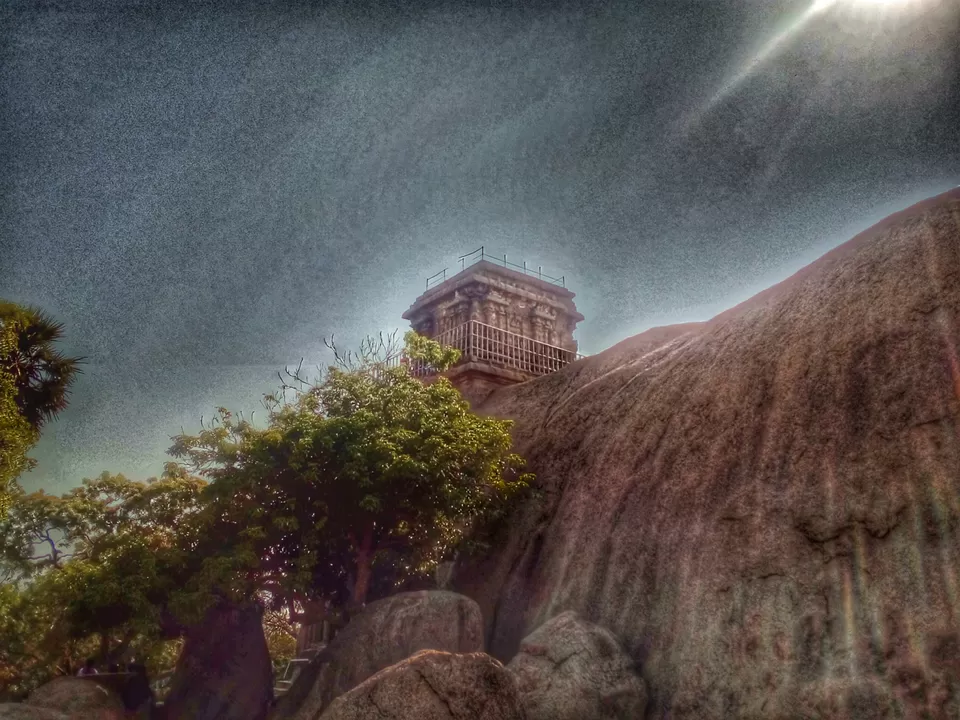
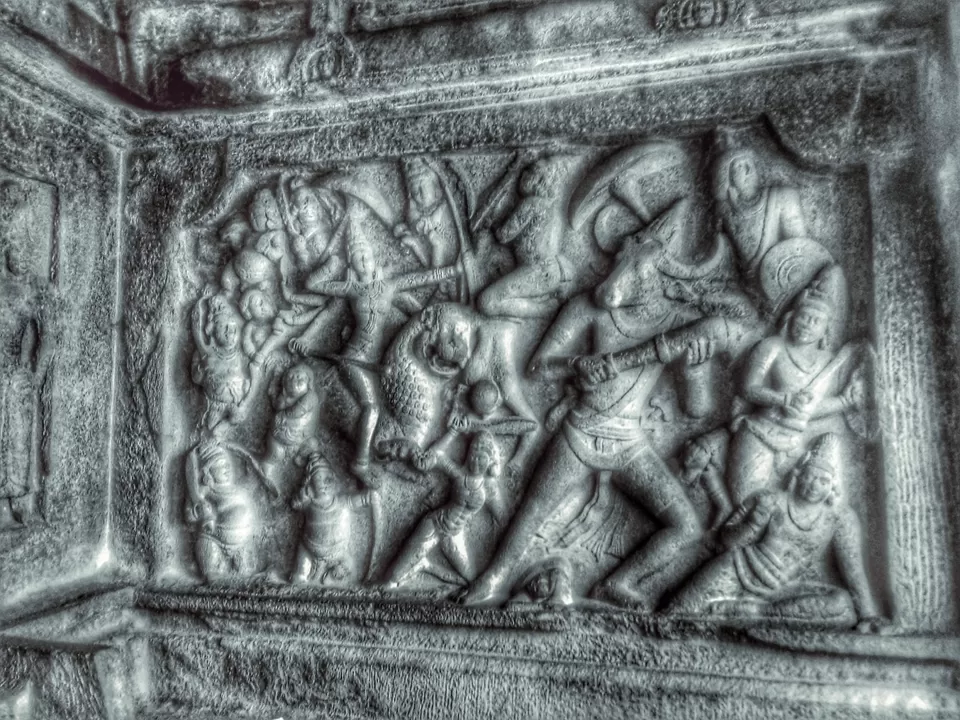
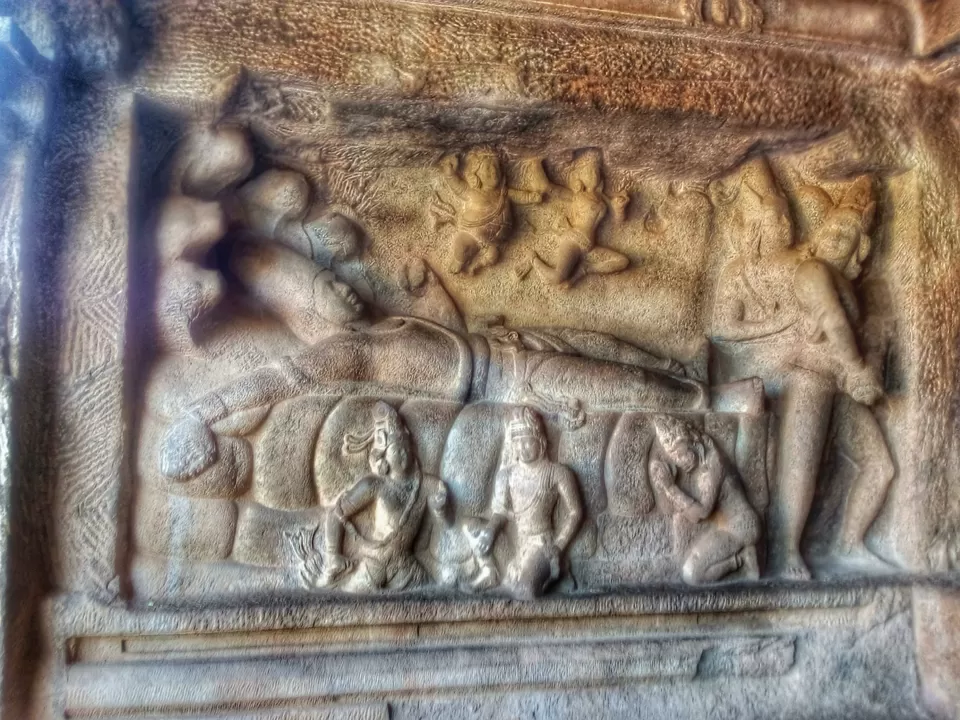
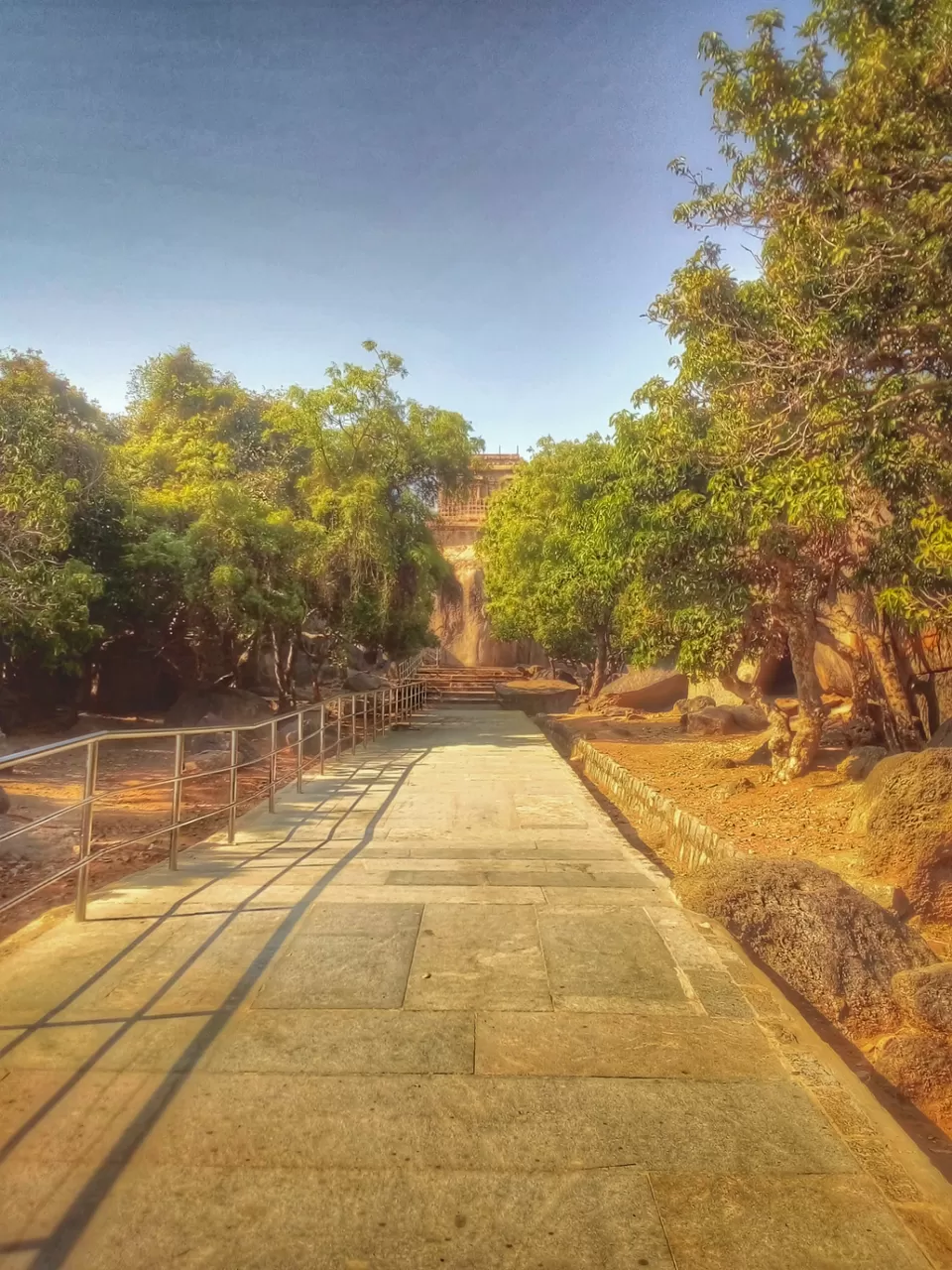
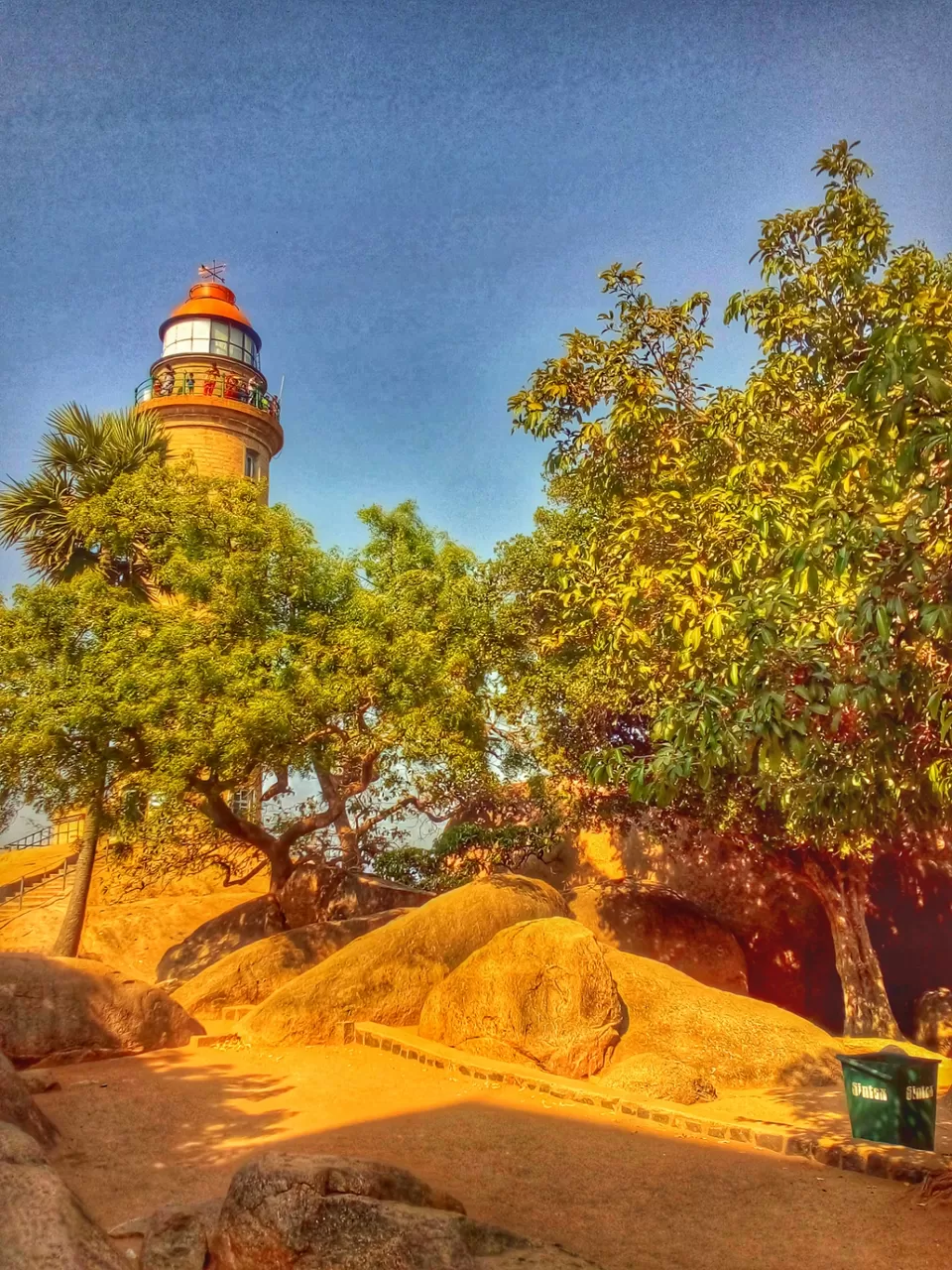
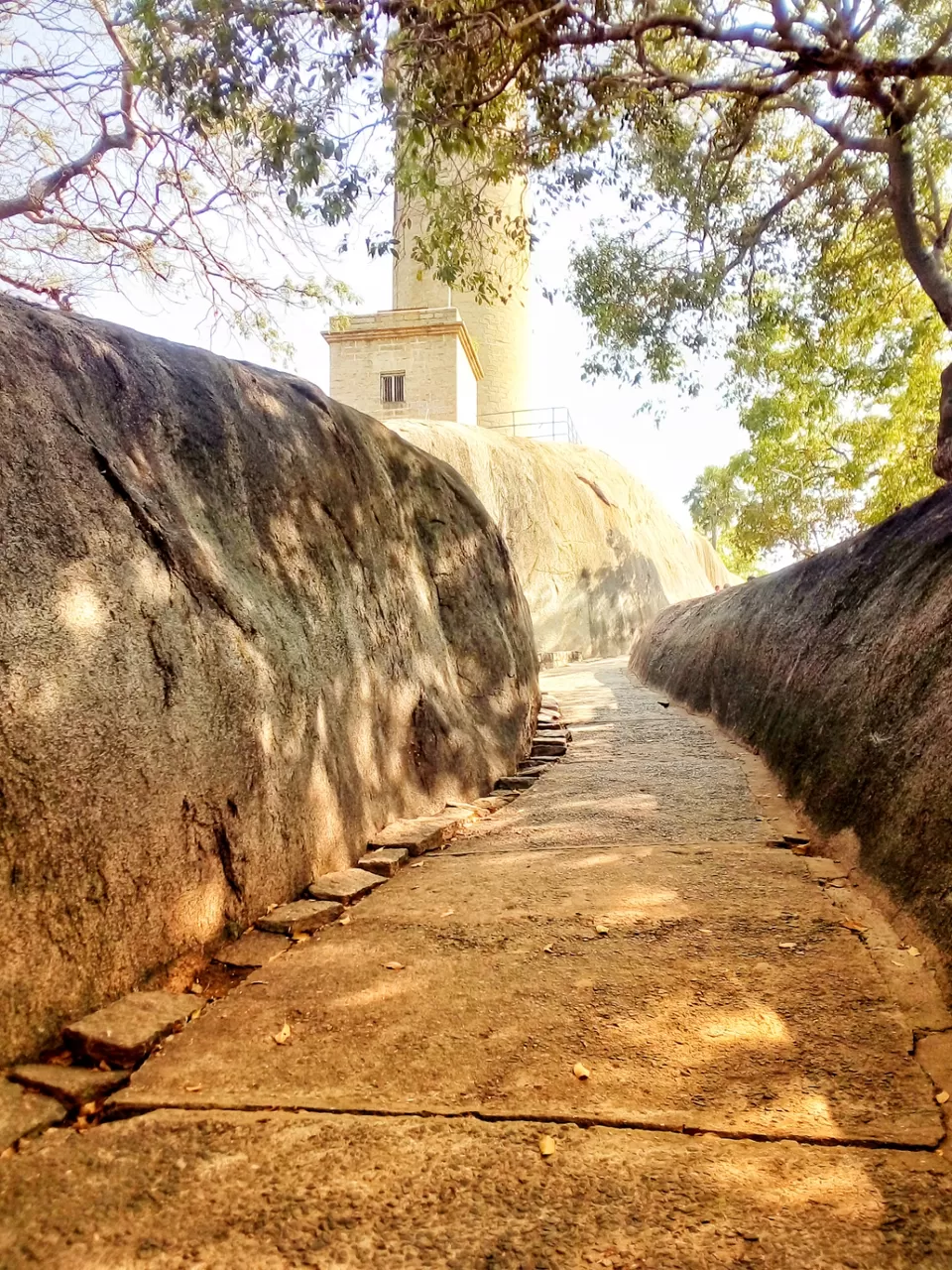
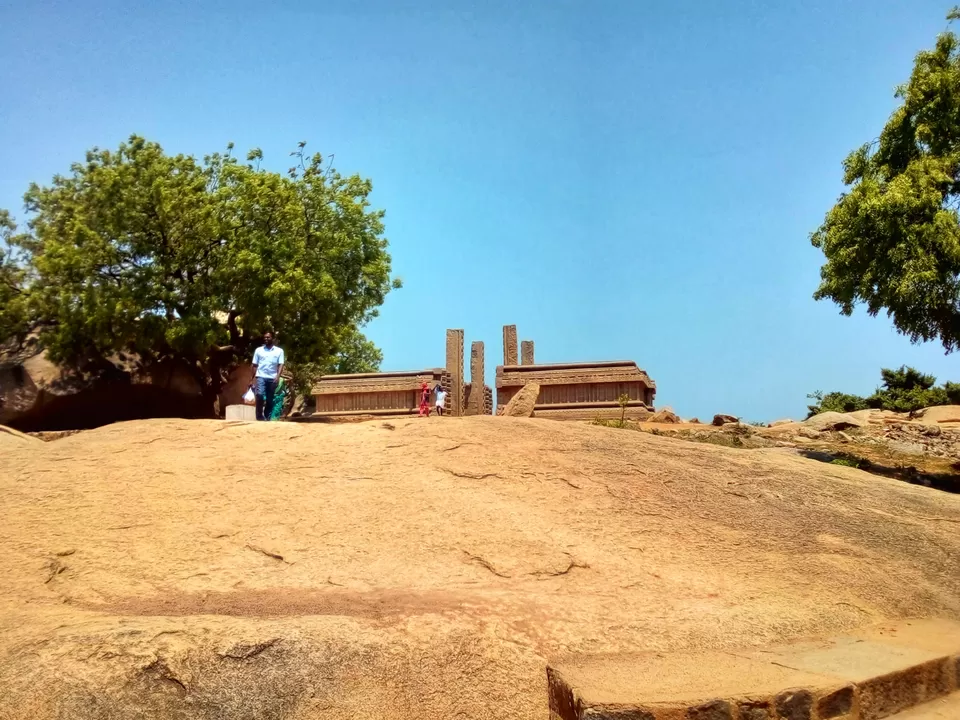
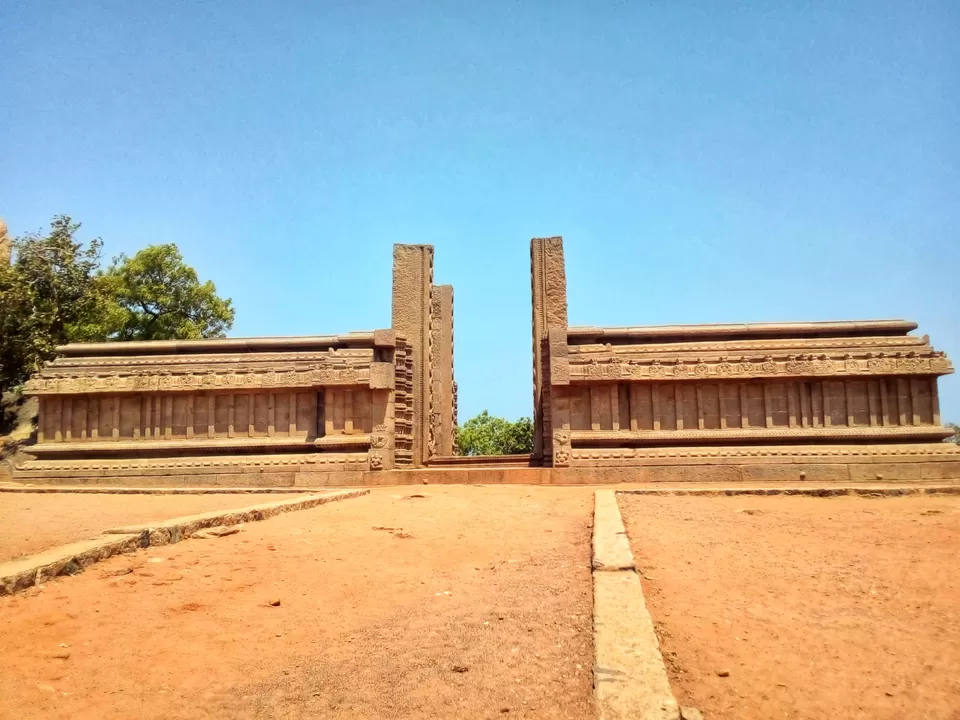
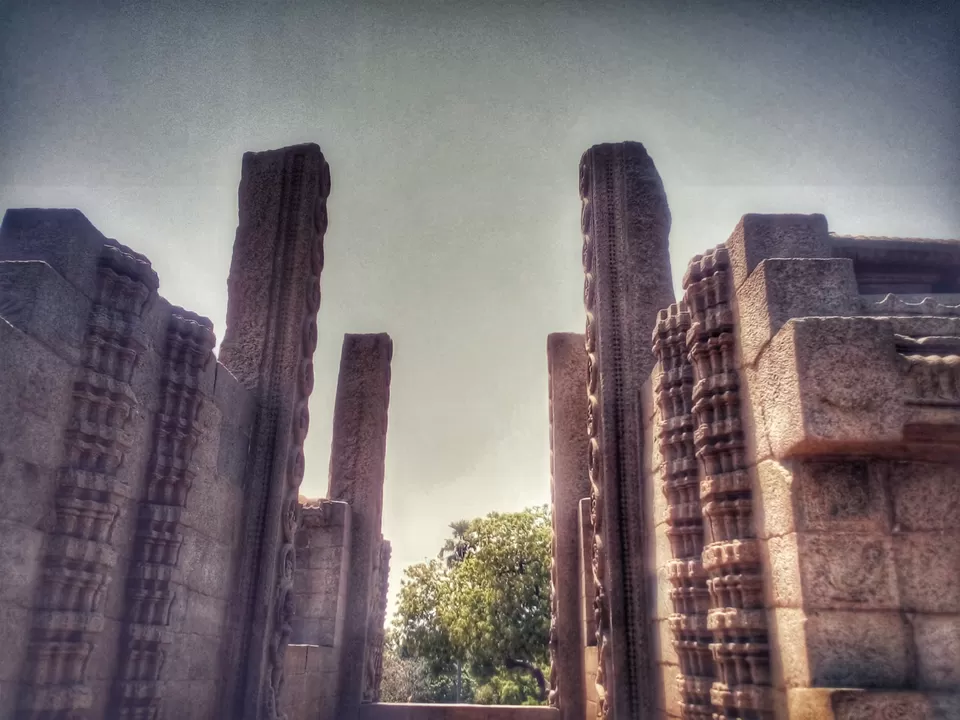
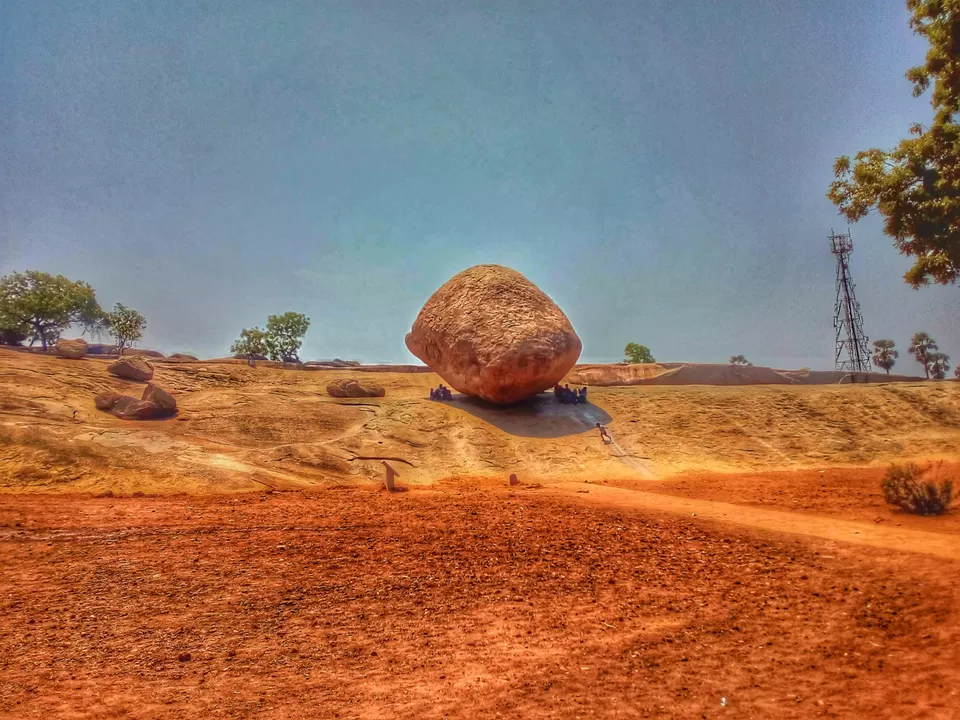
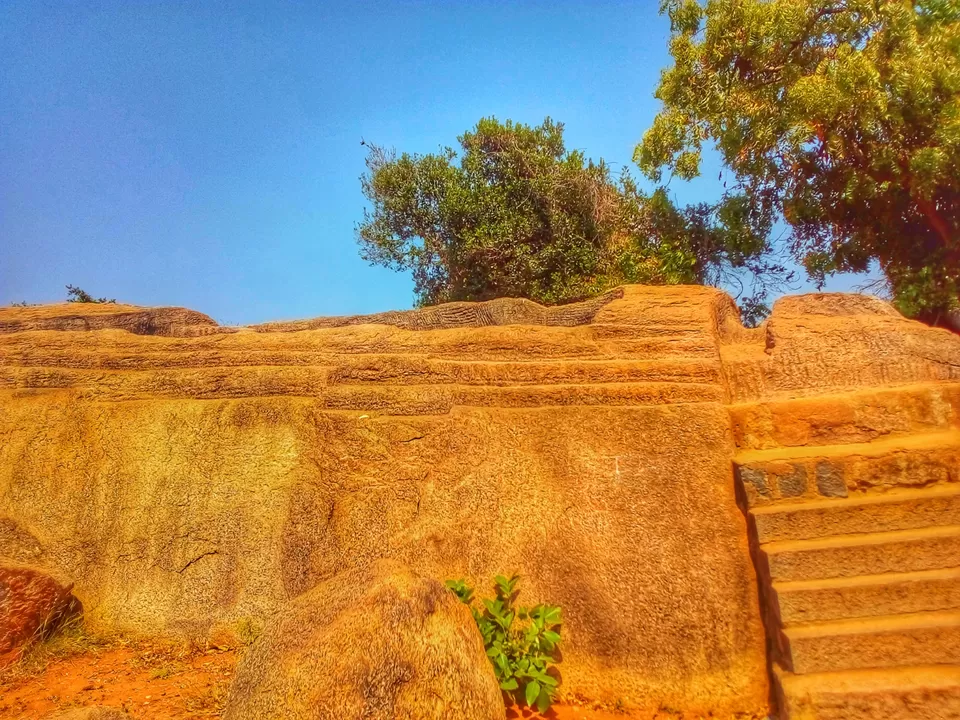
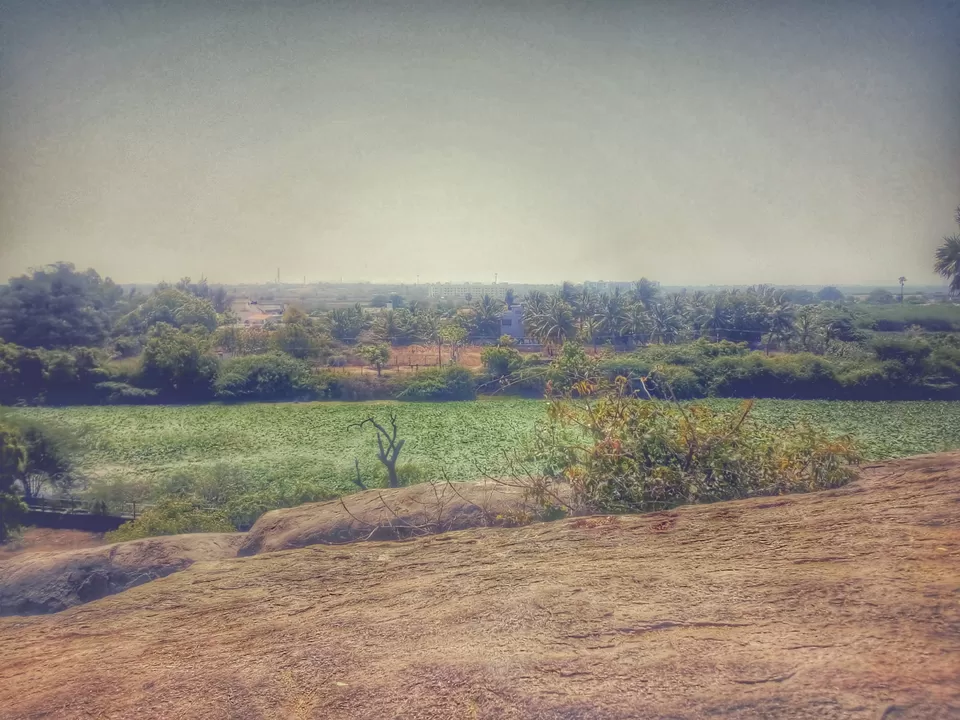
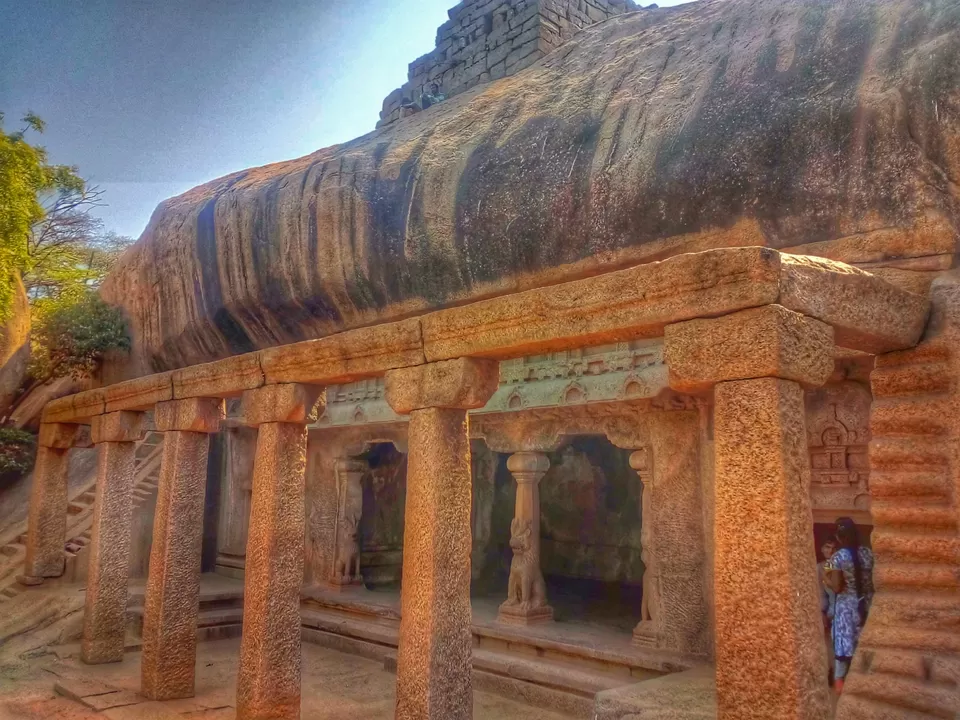
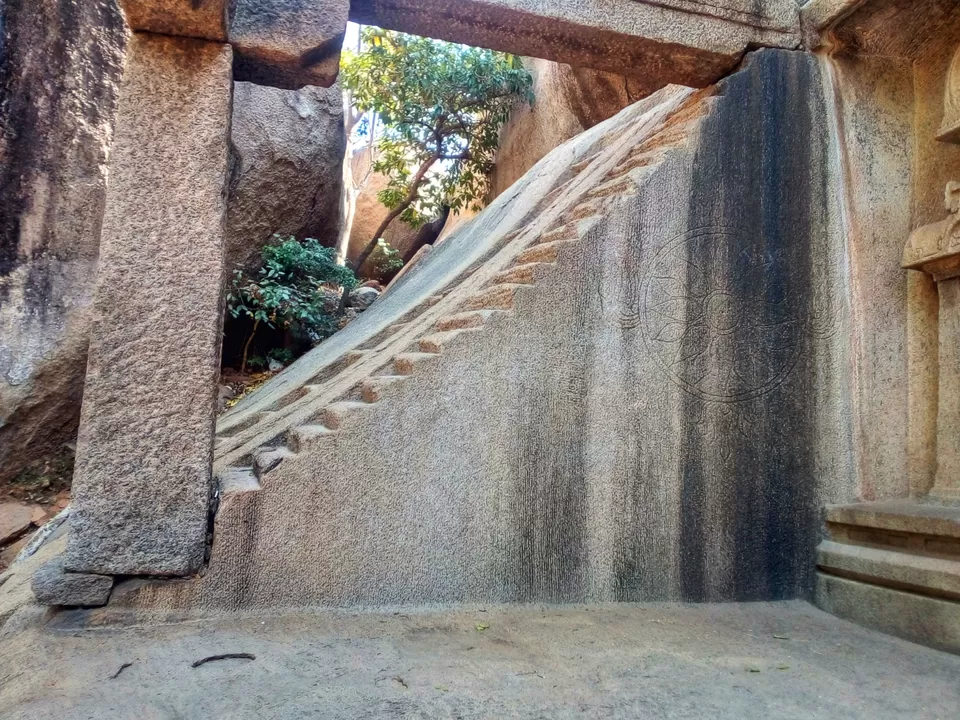
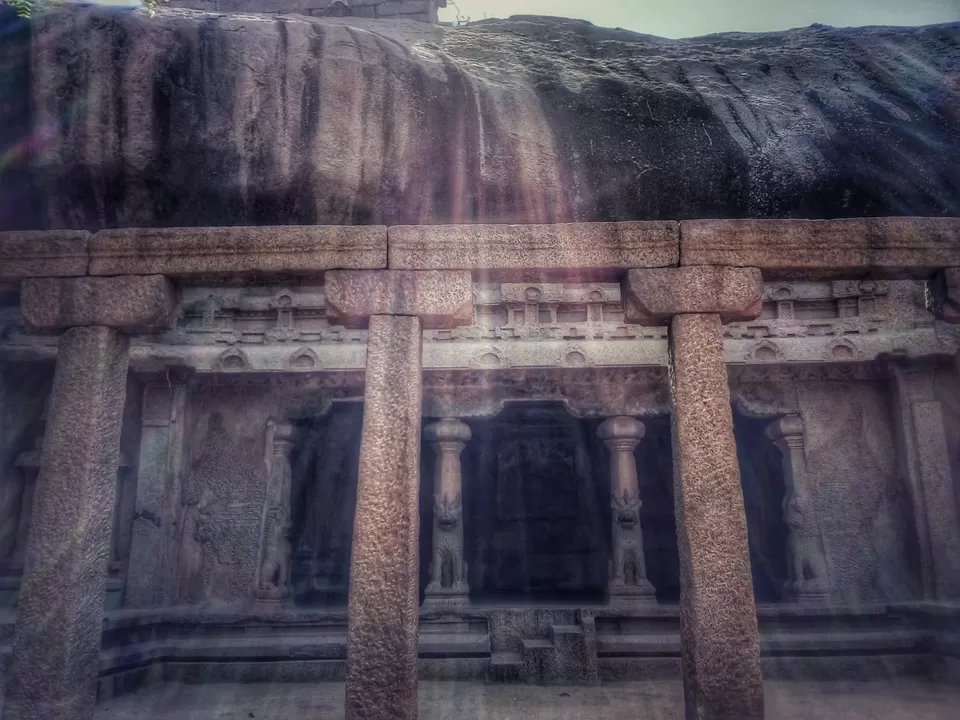
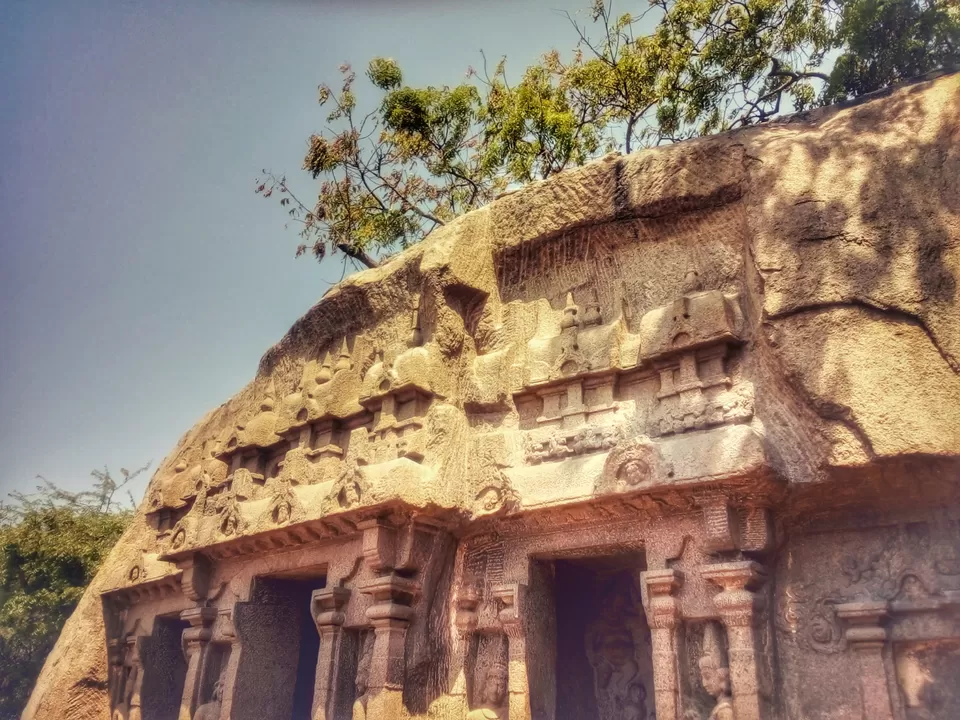
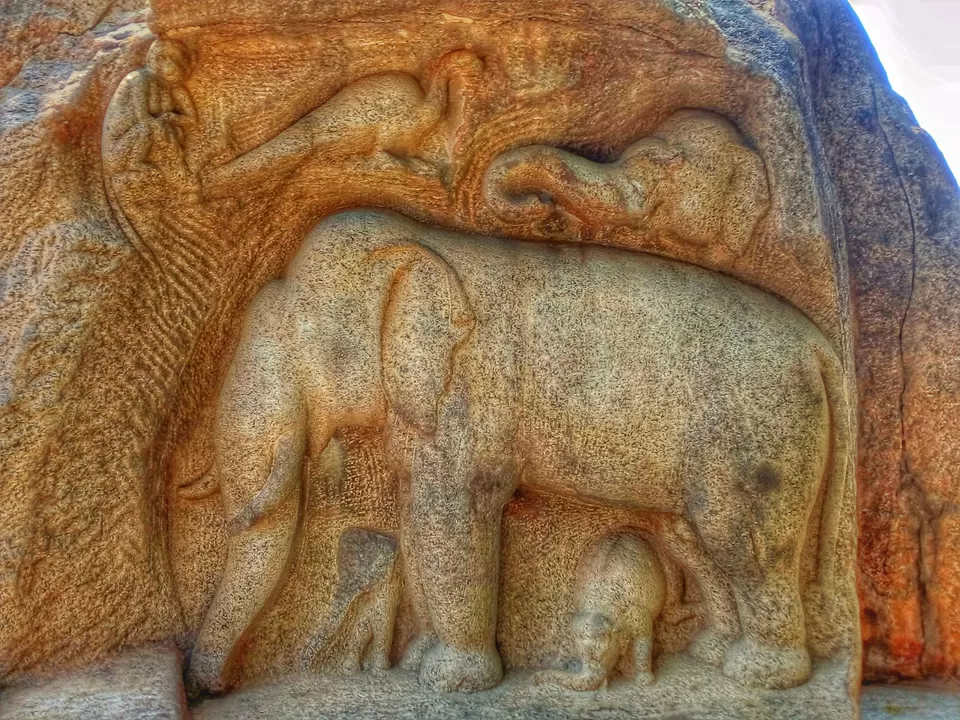
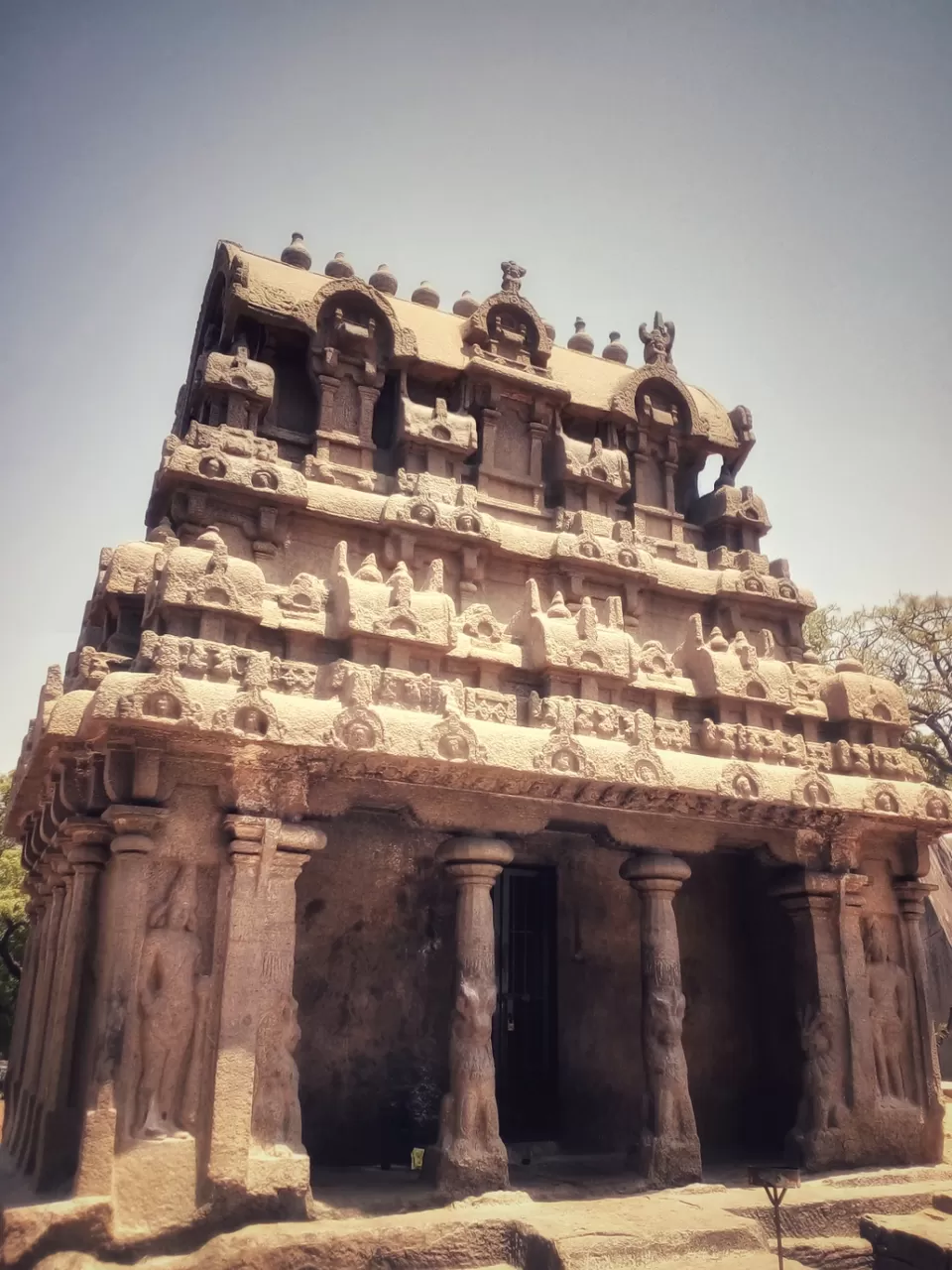
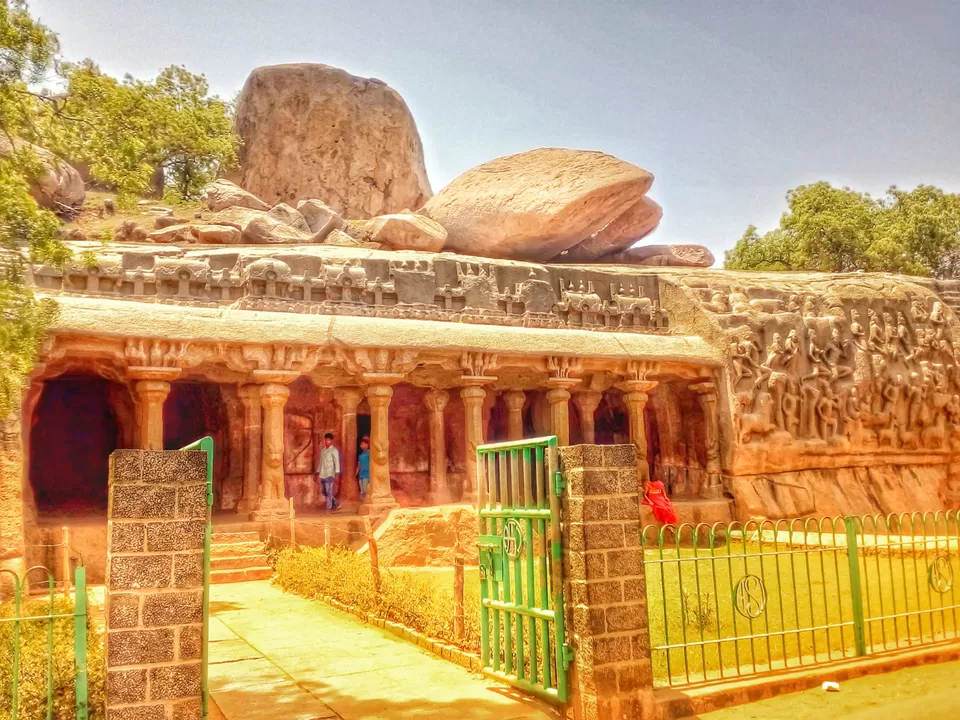

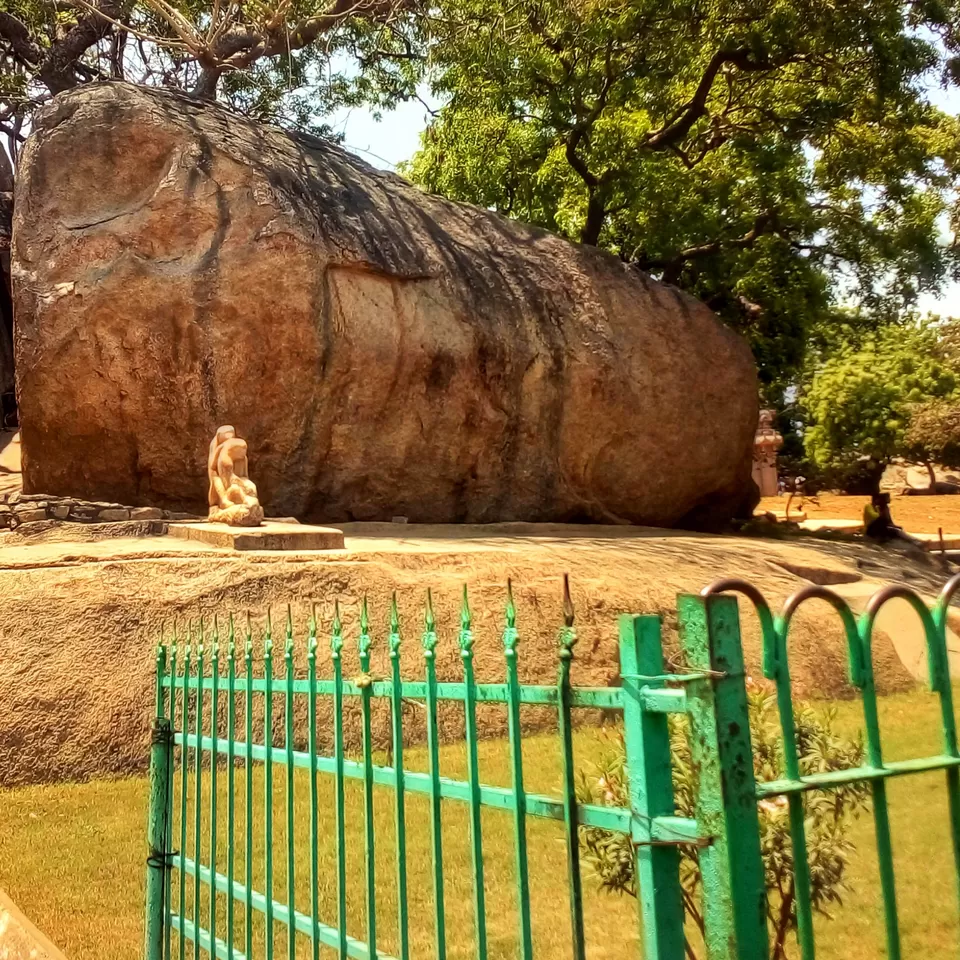
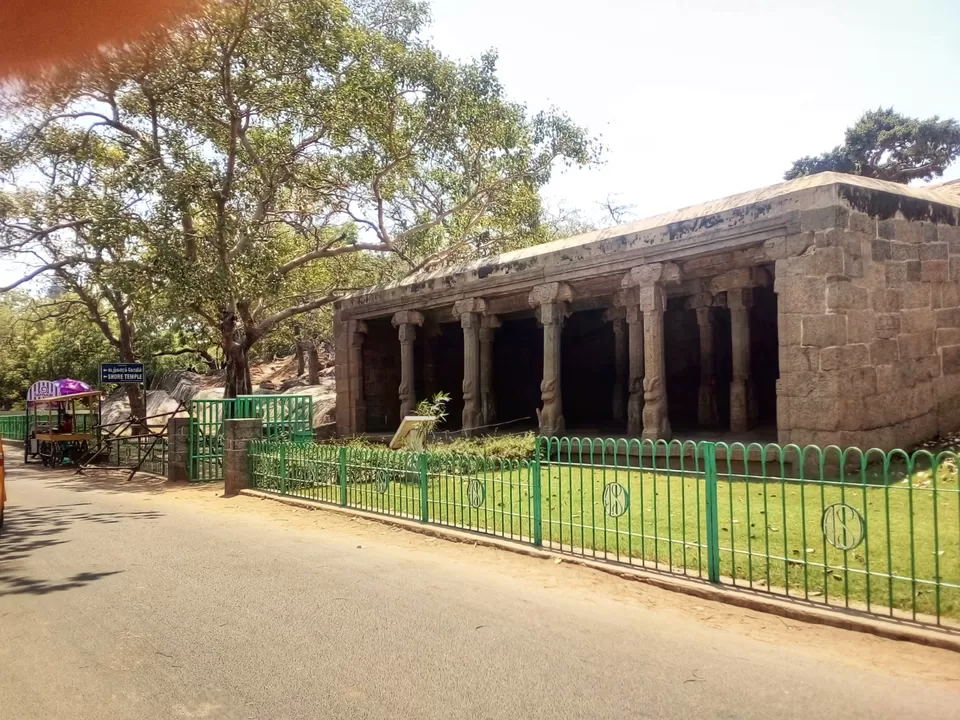
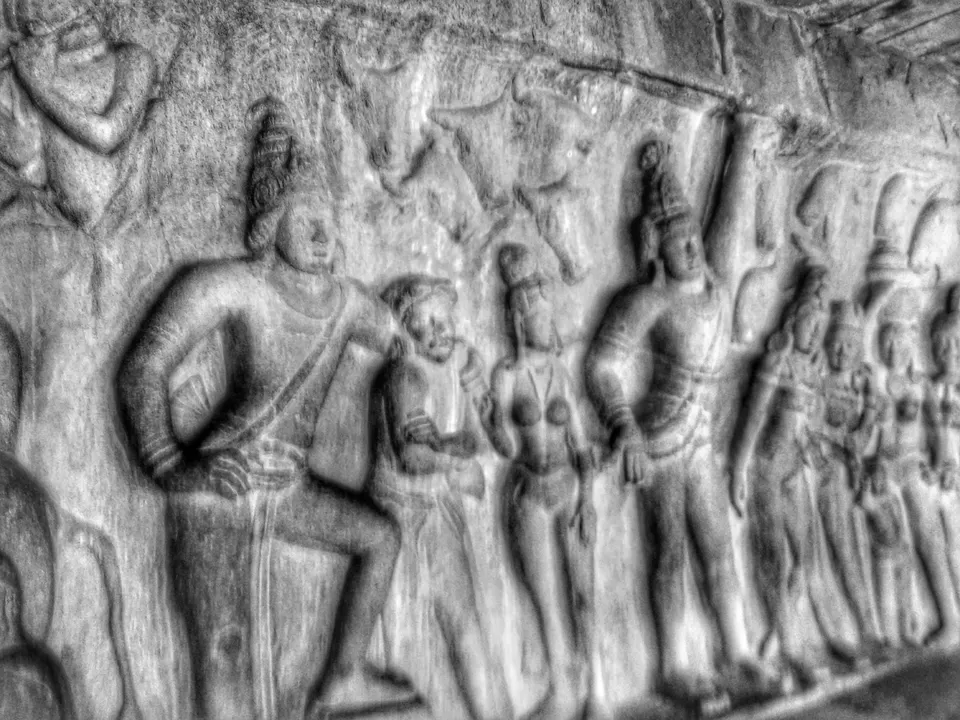
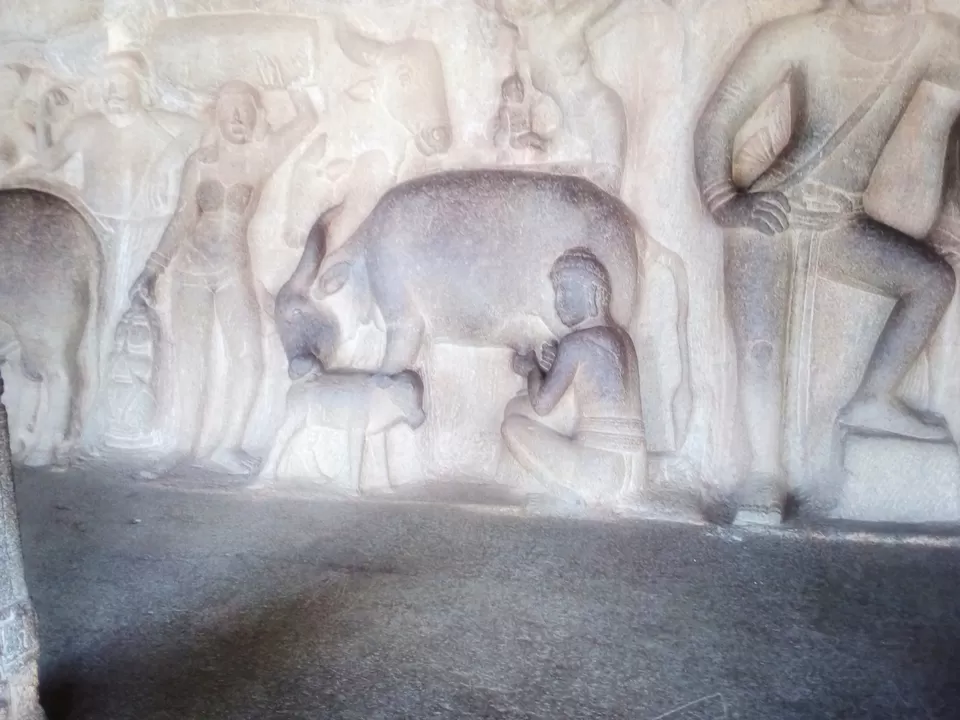

Shore Temple and Five chariots:





